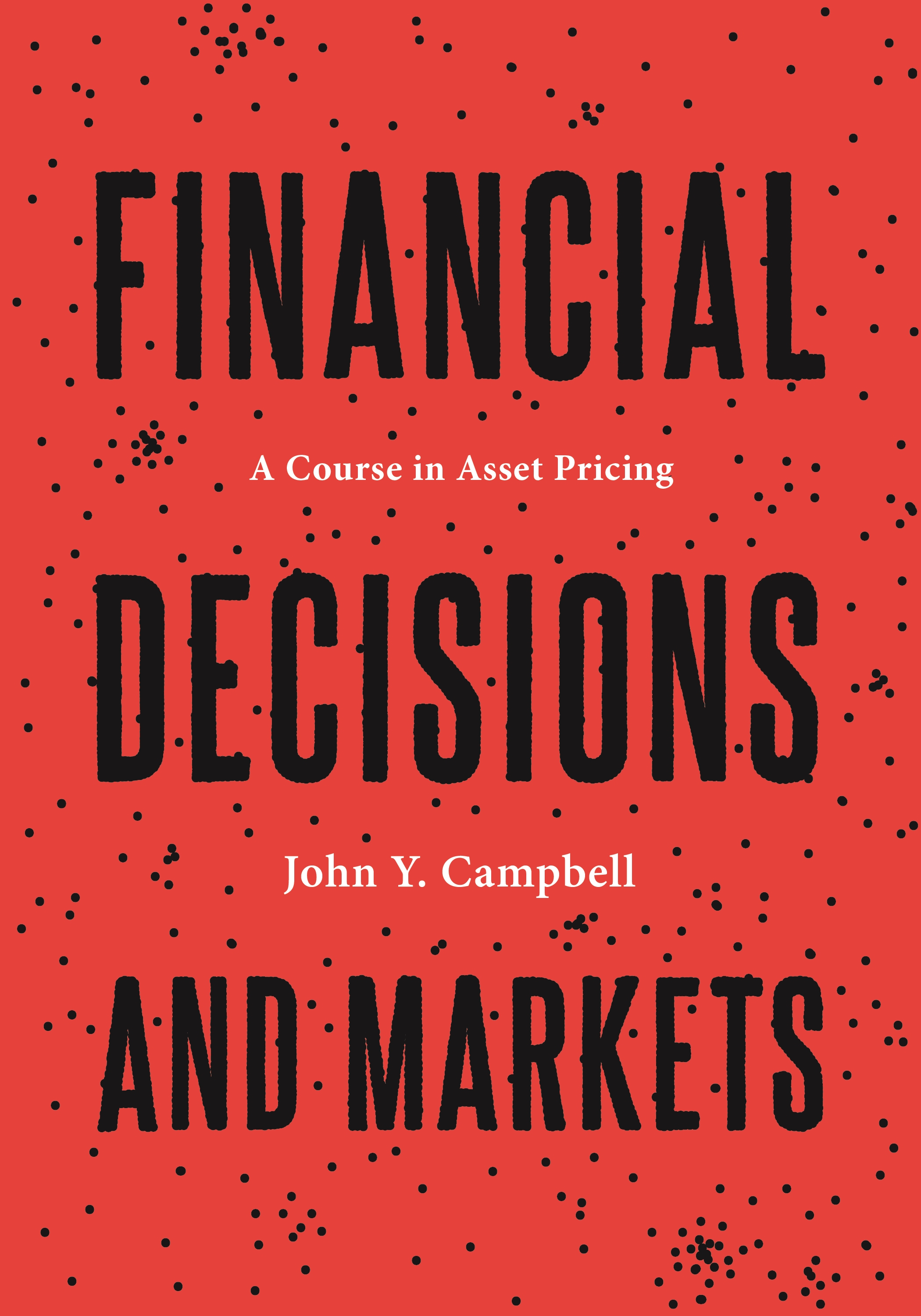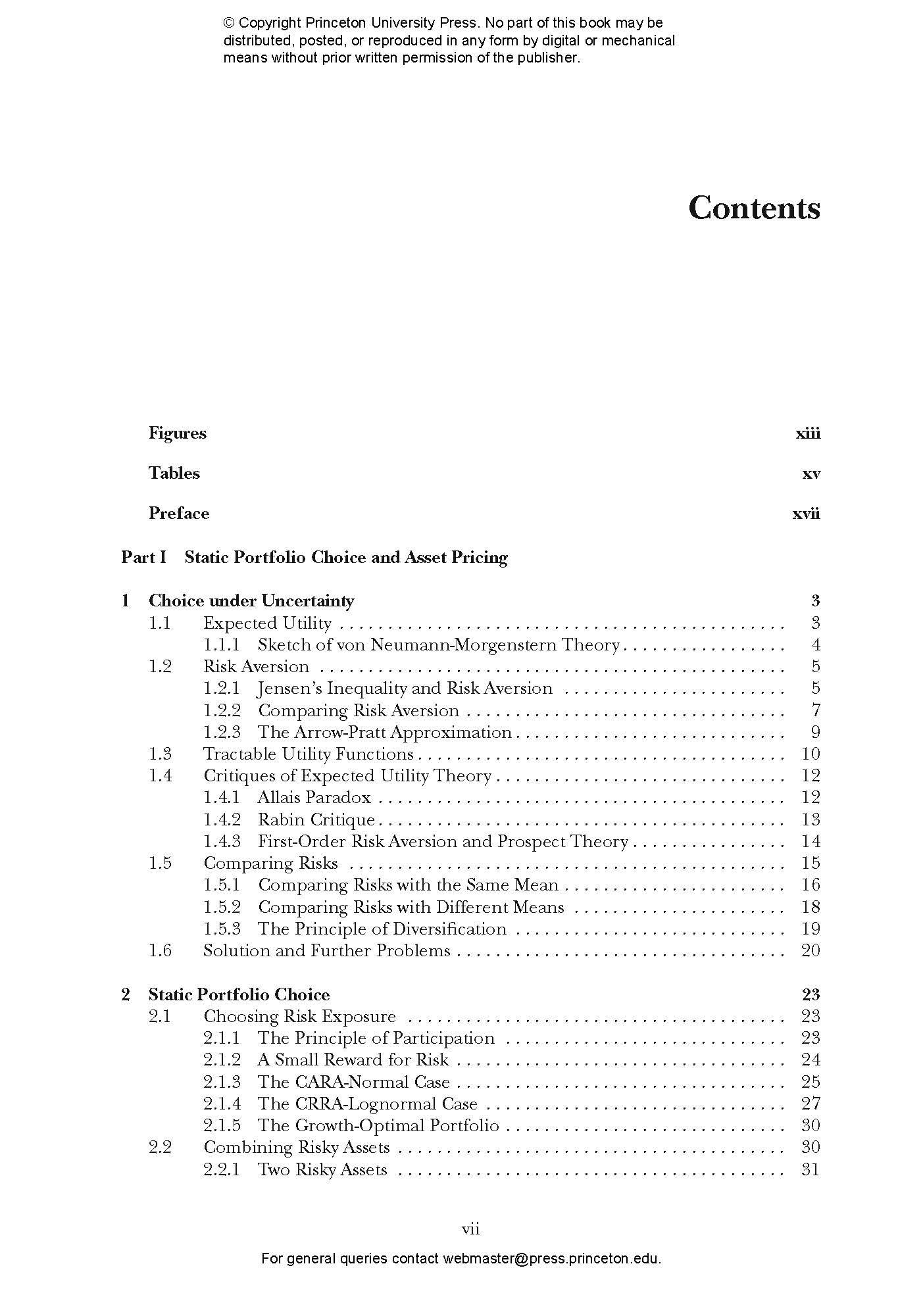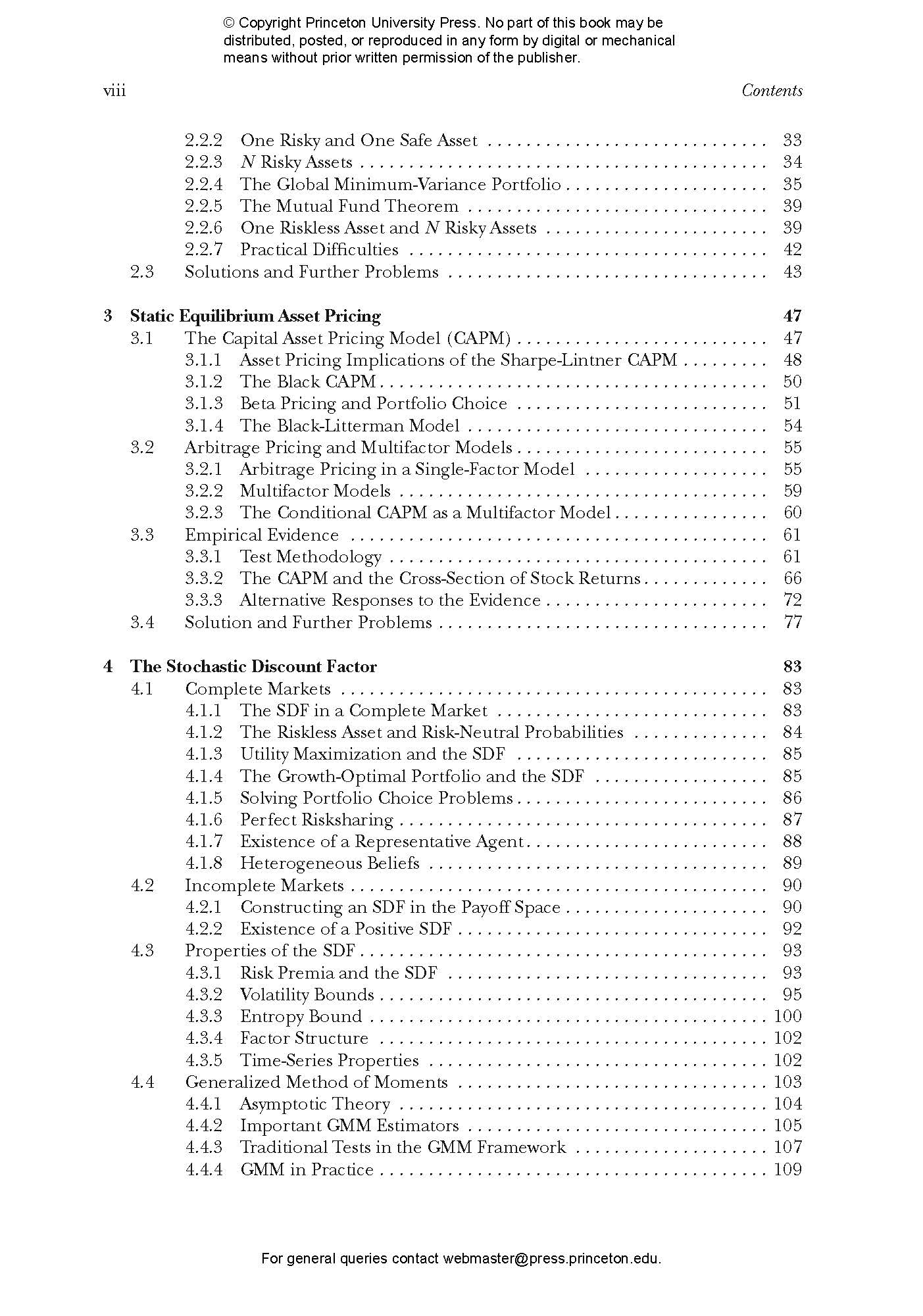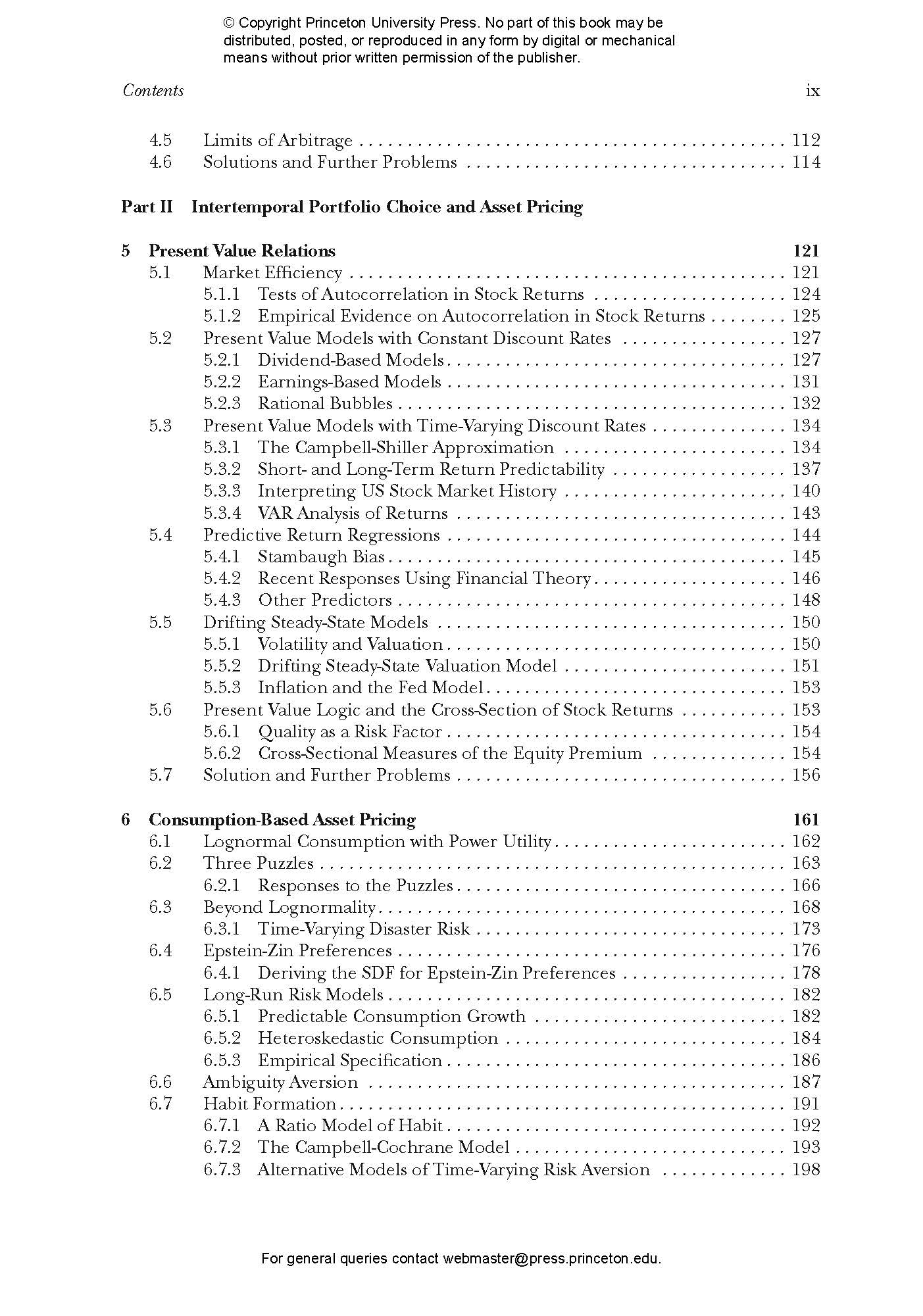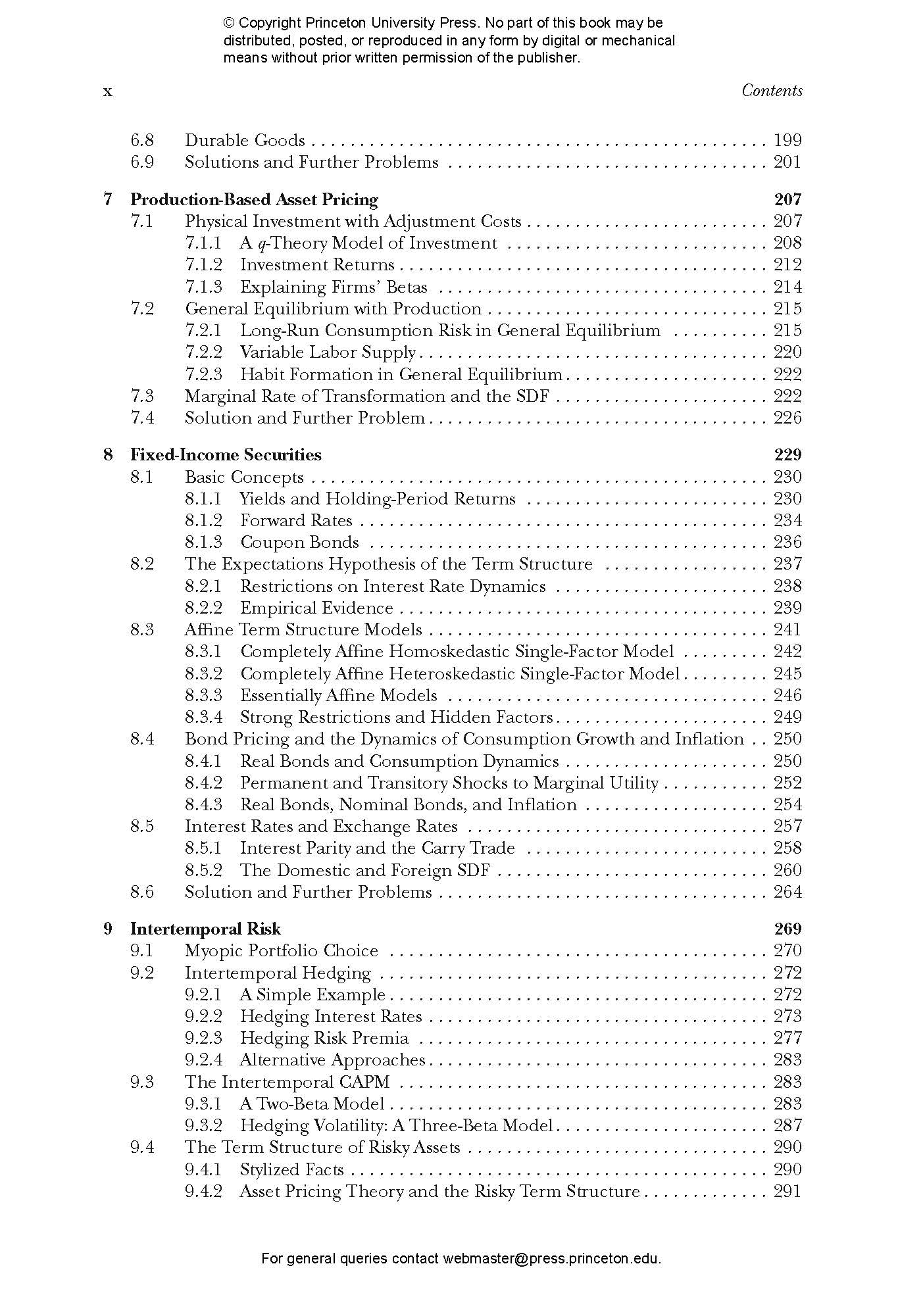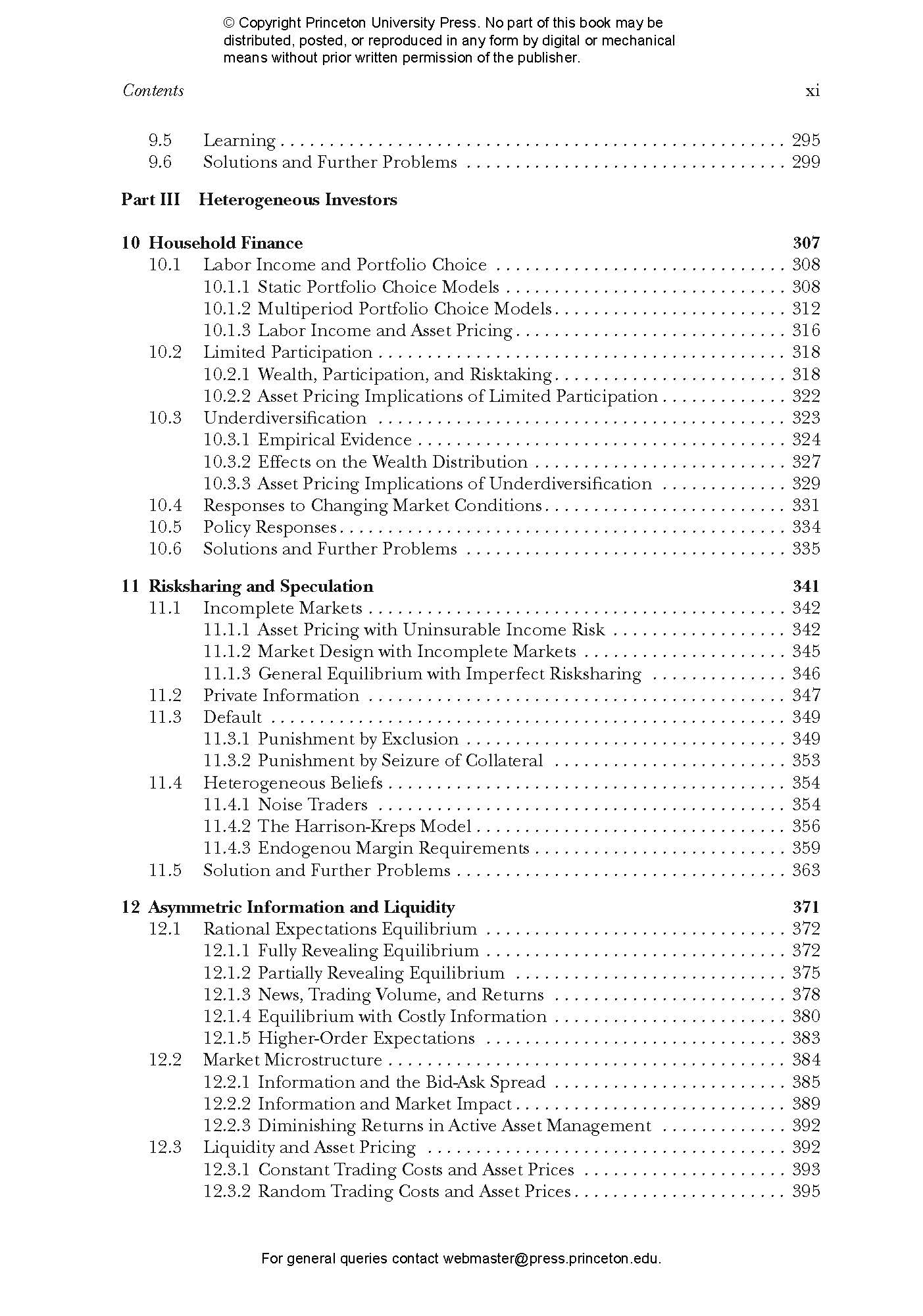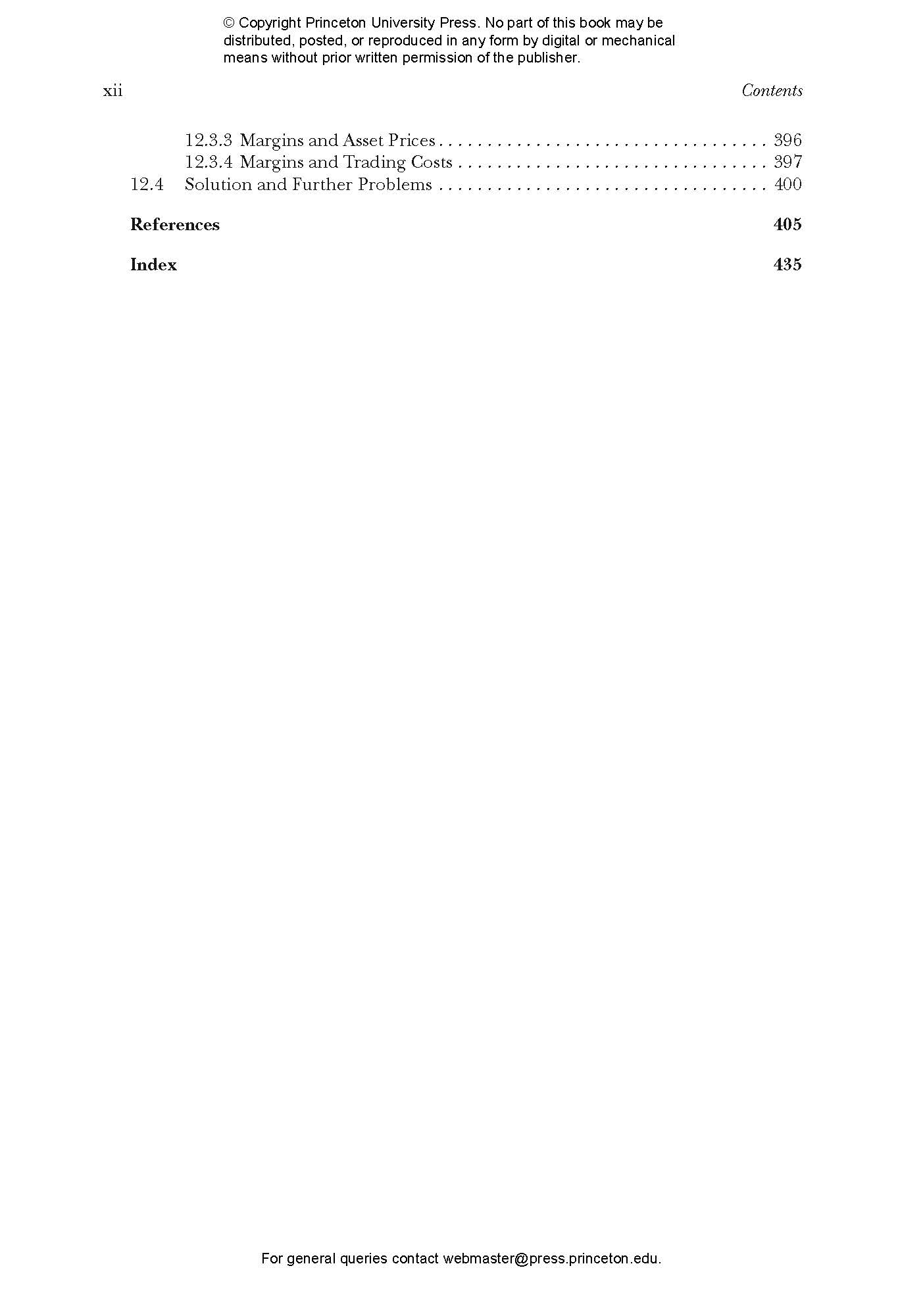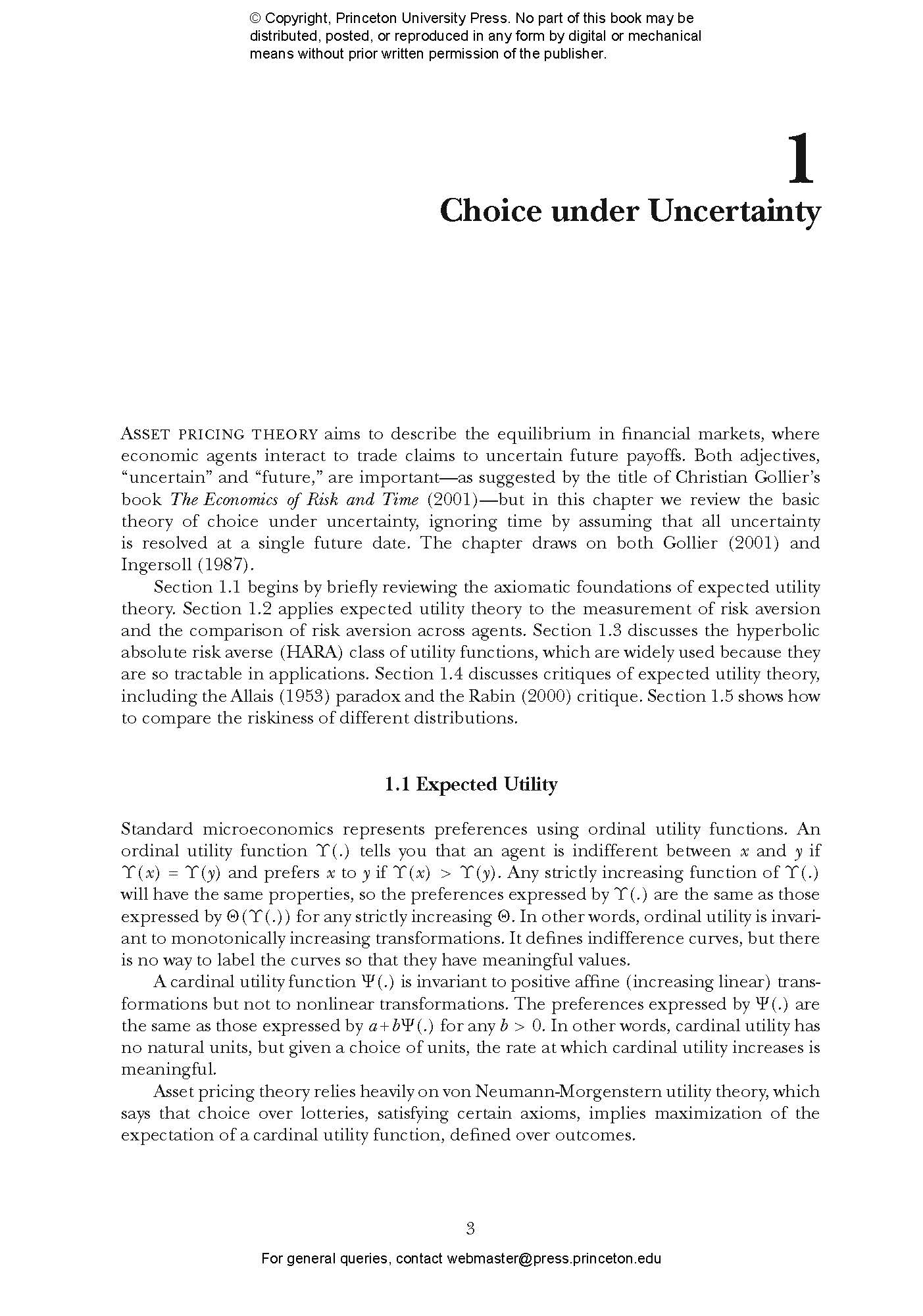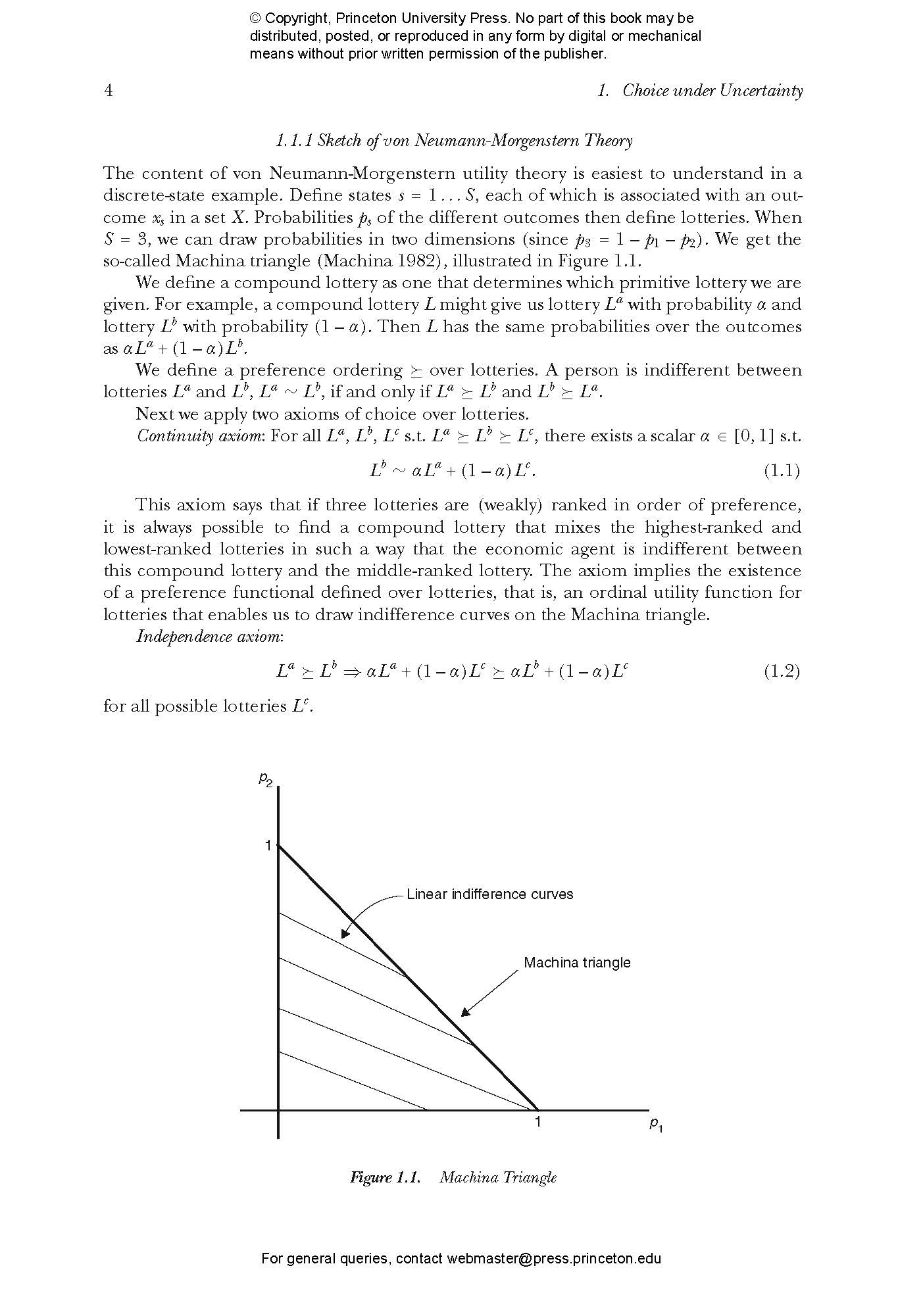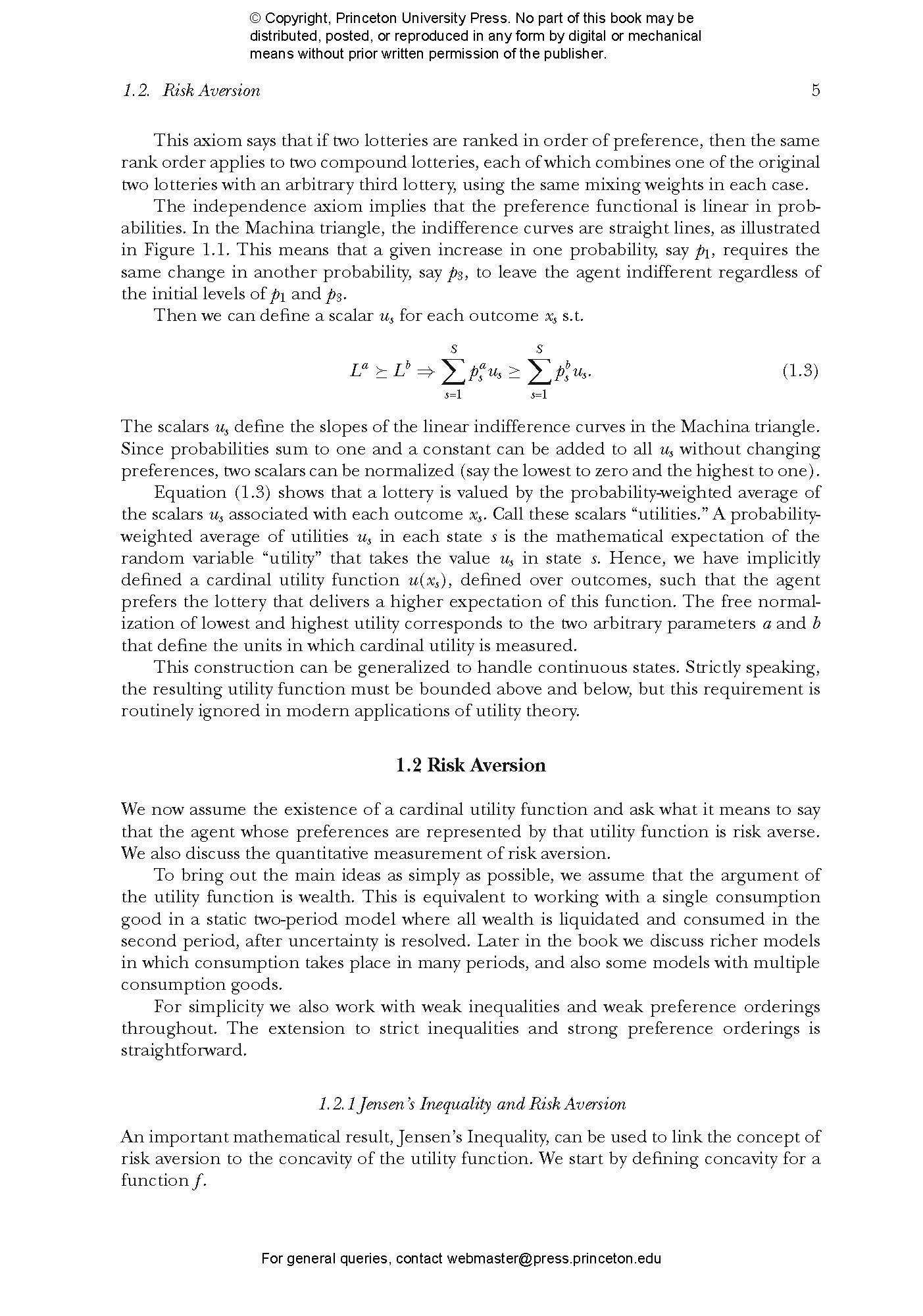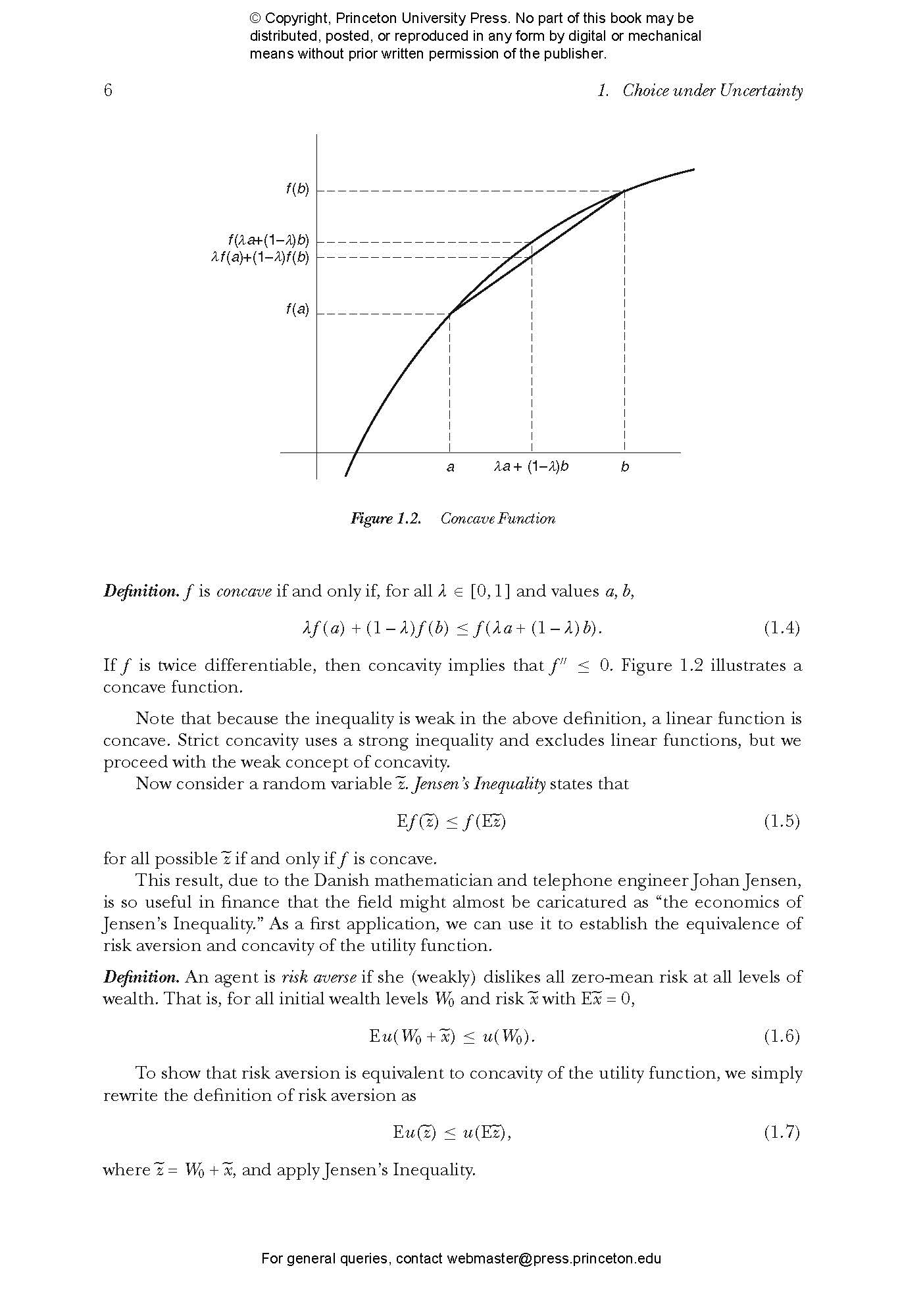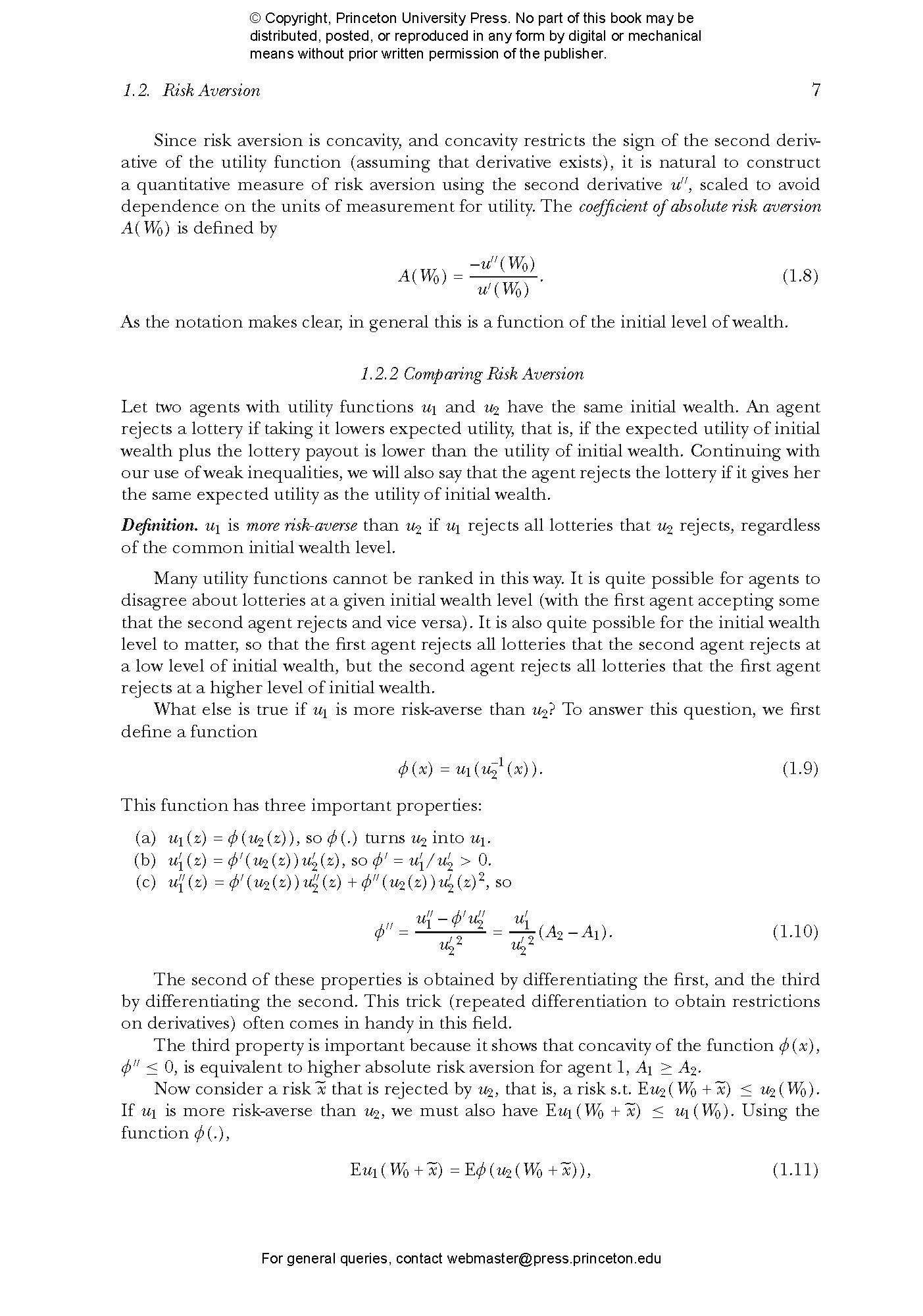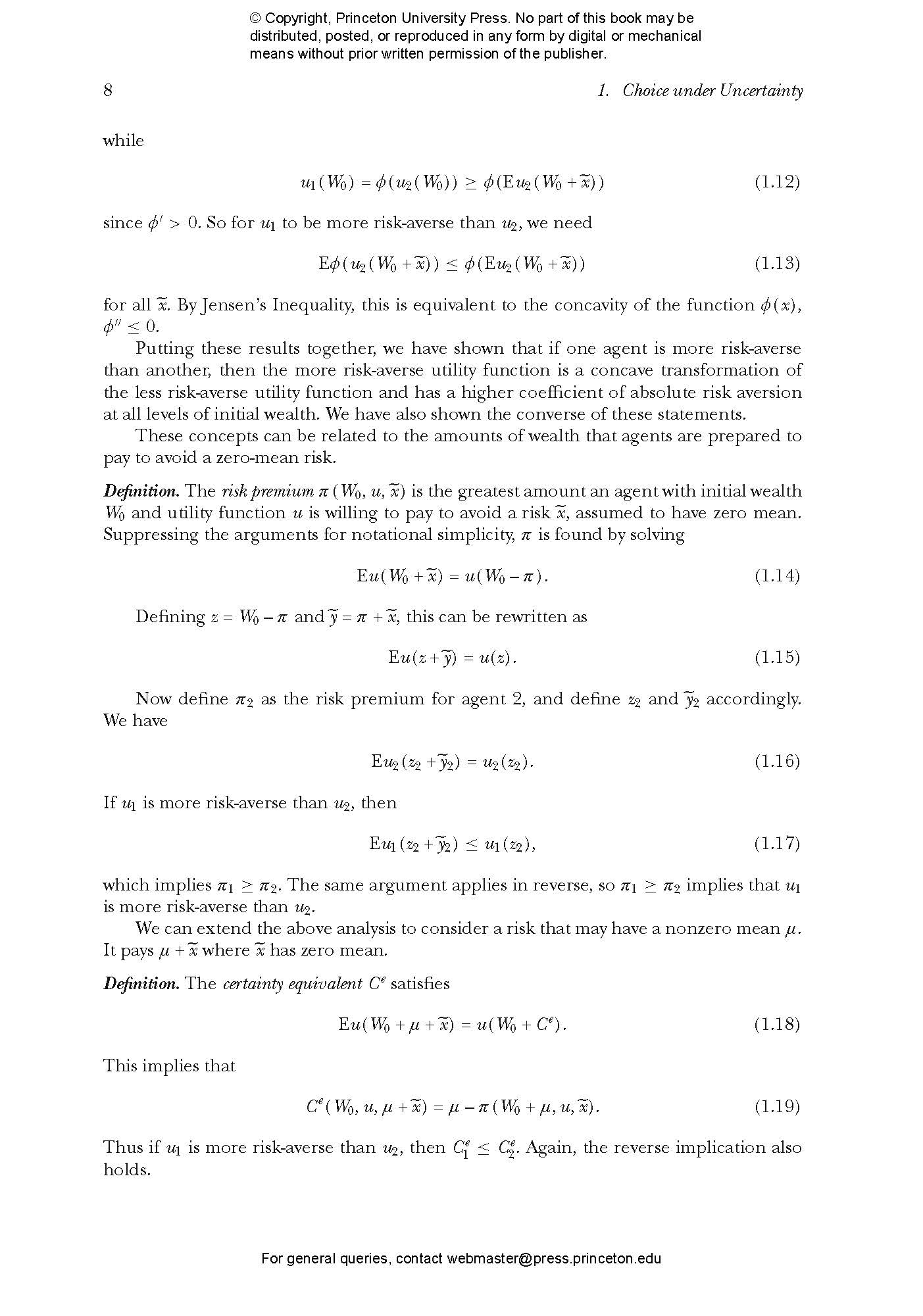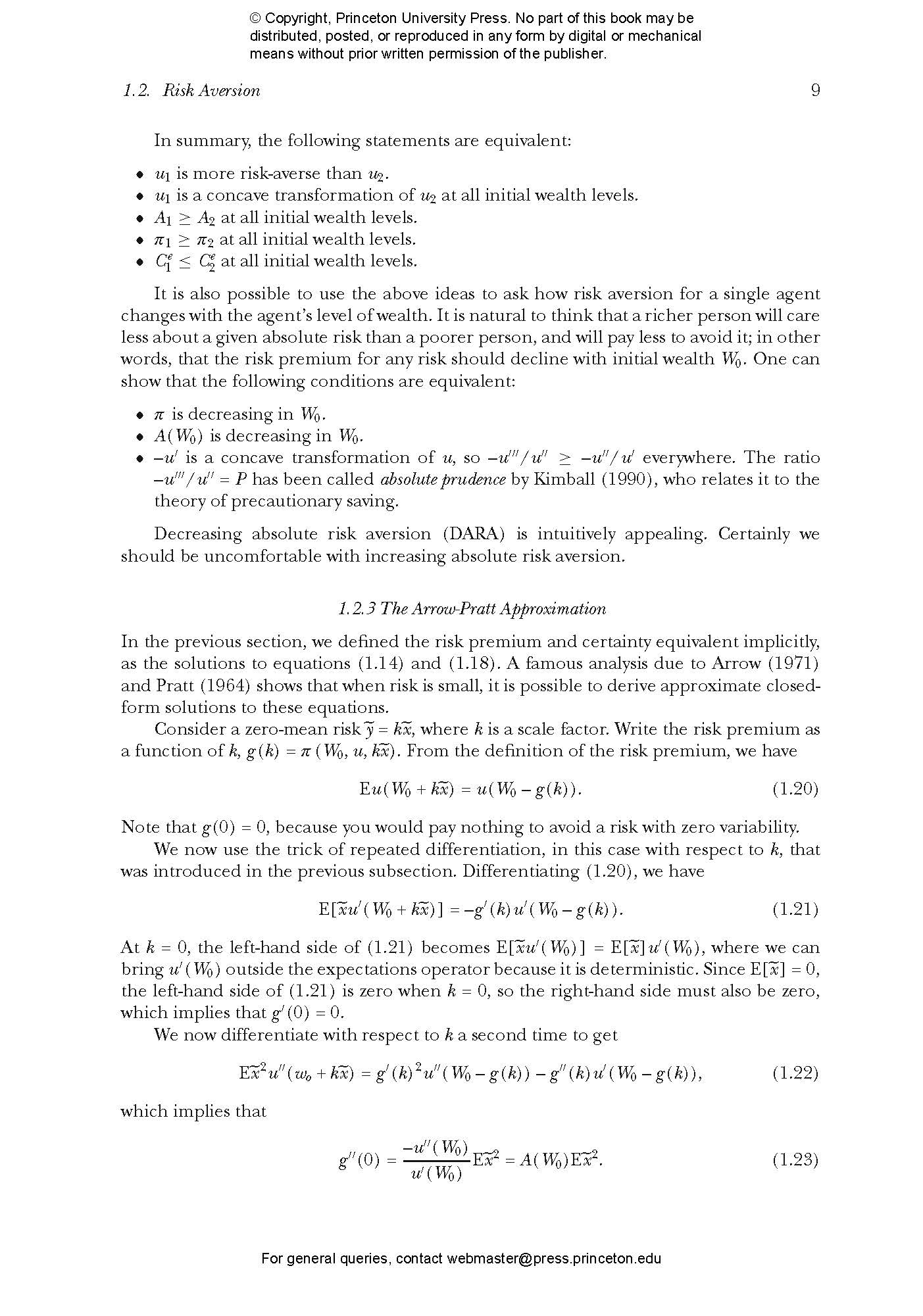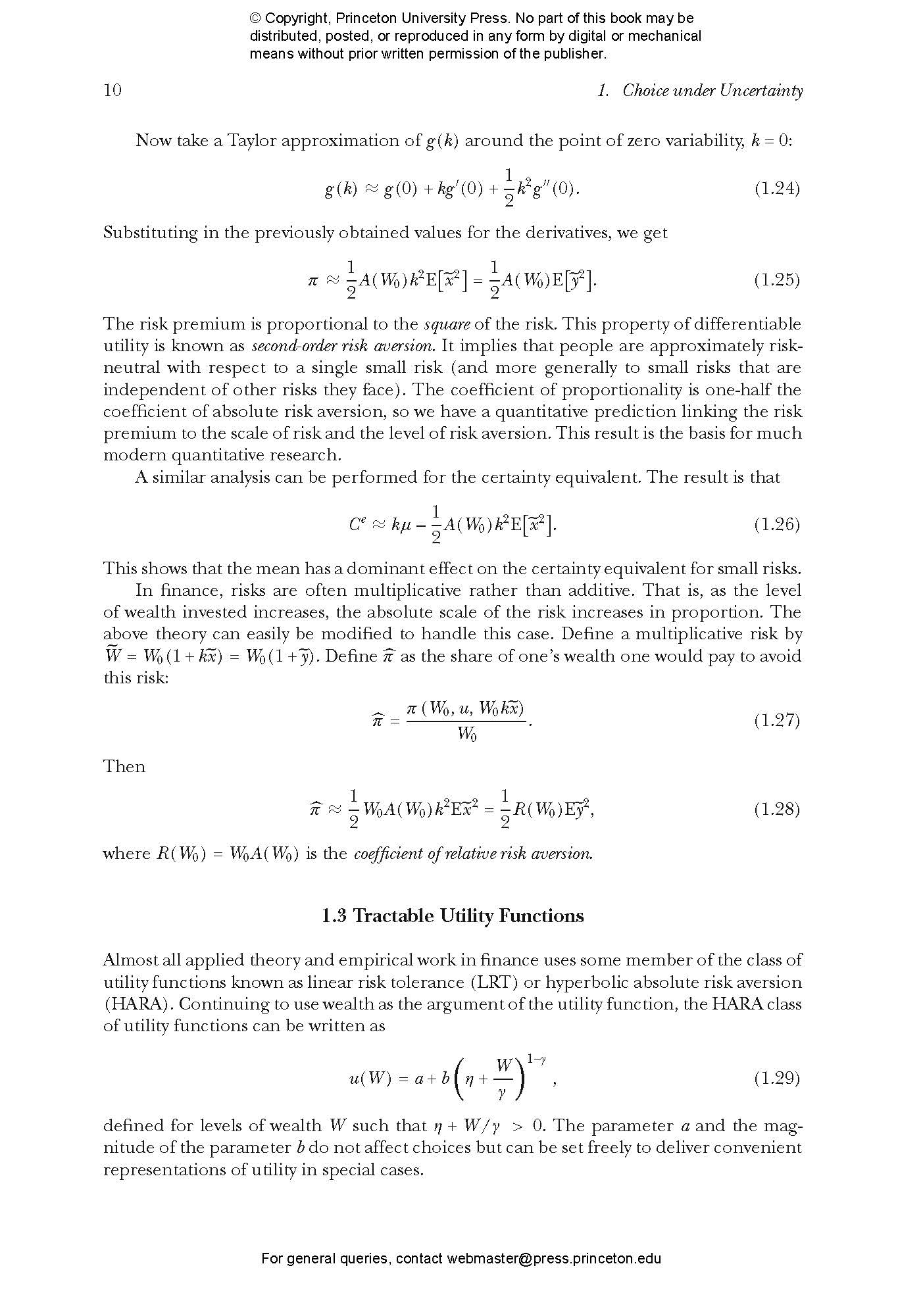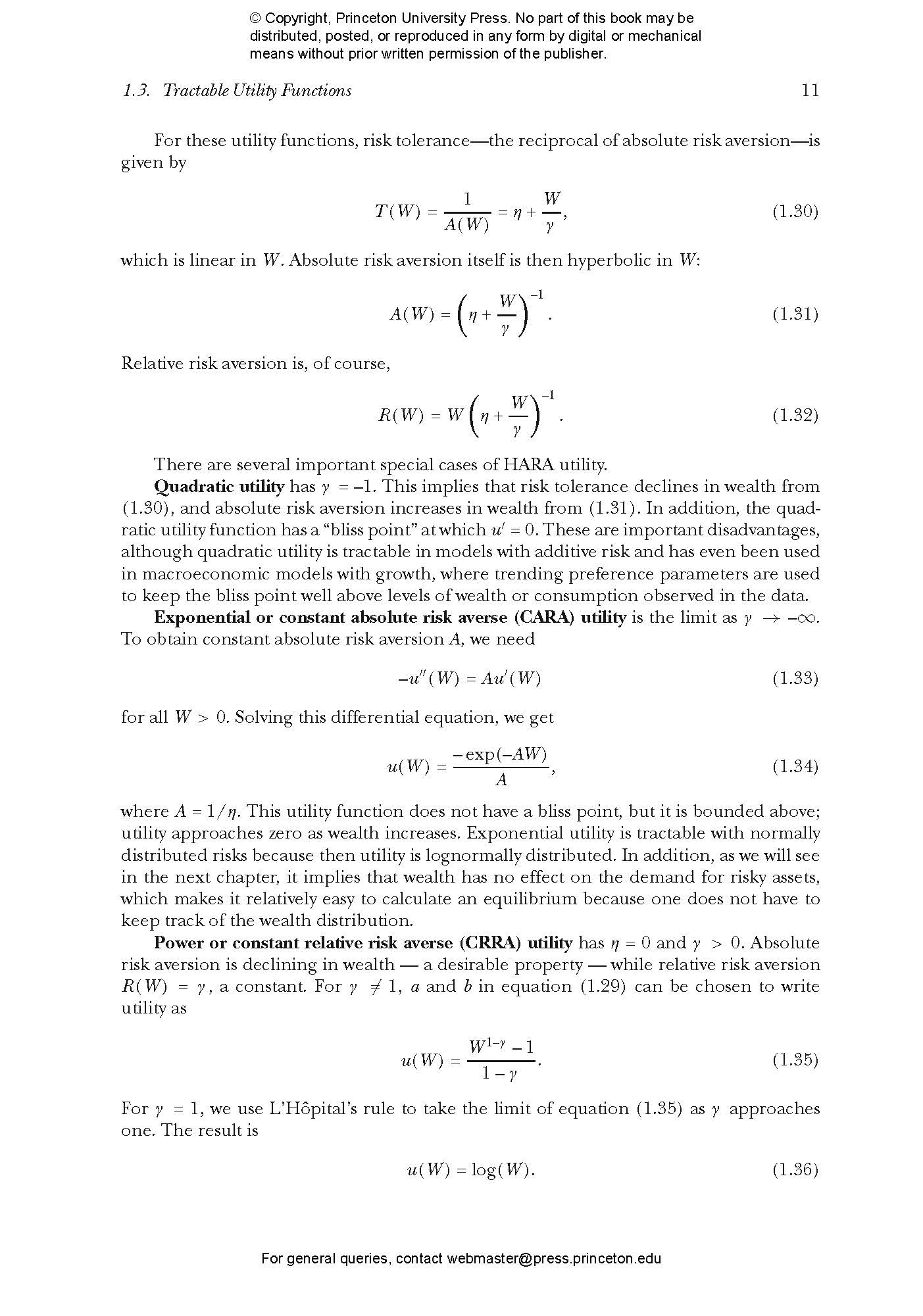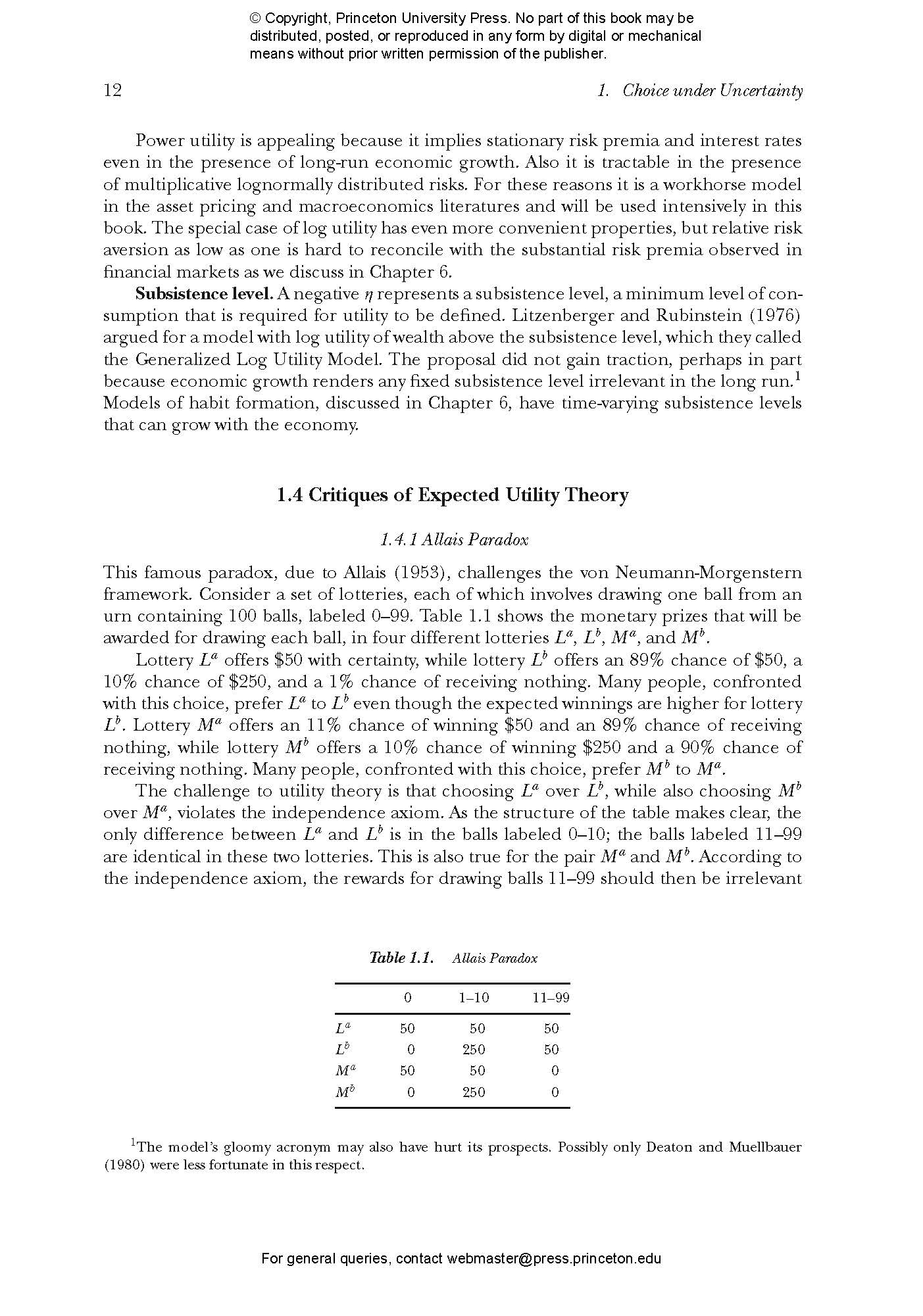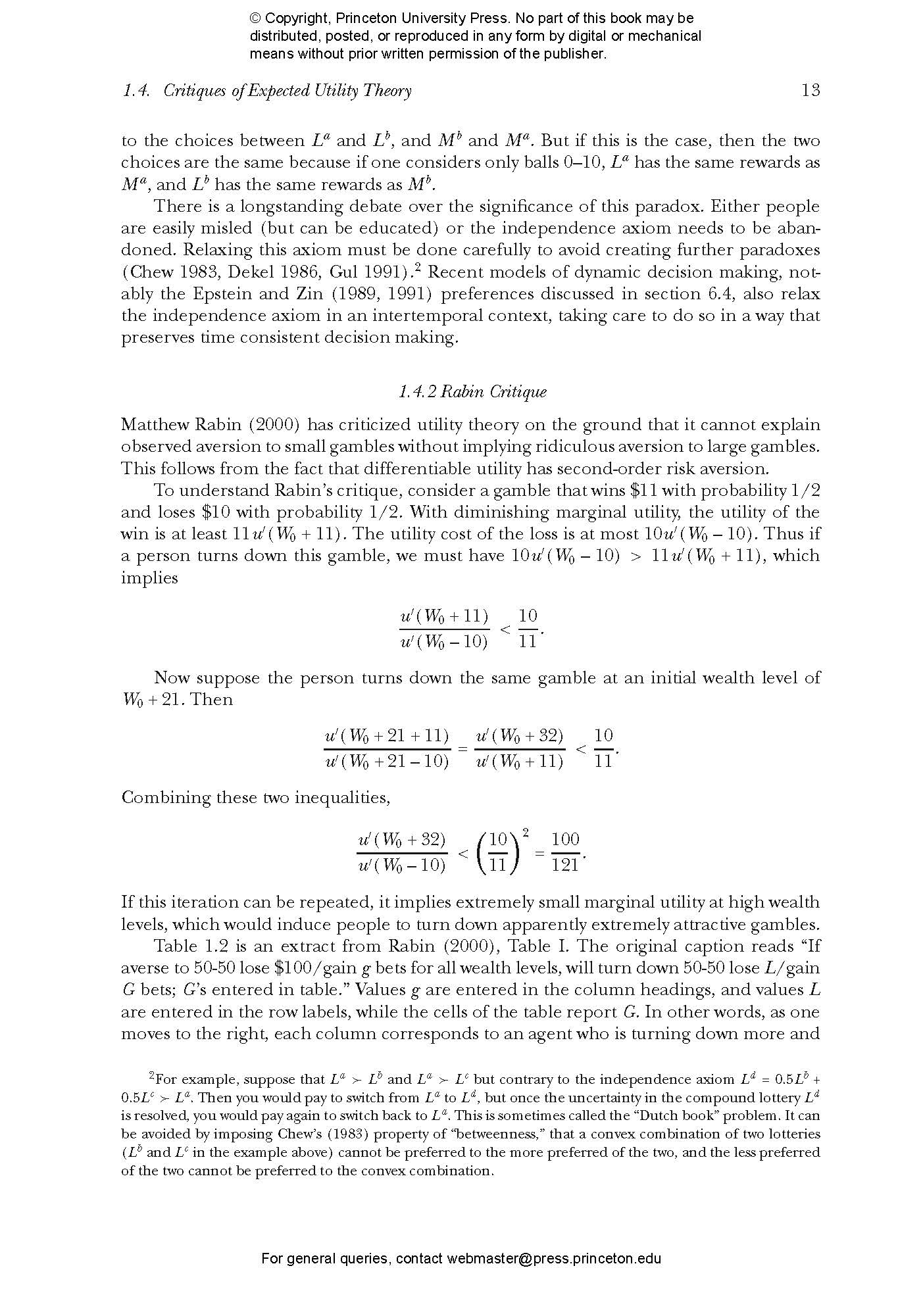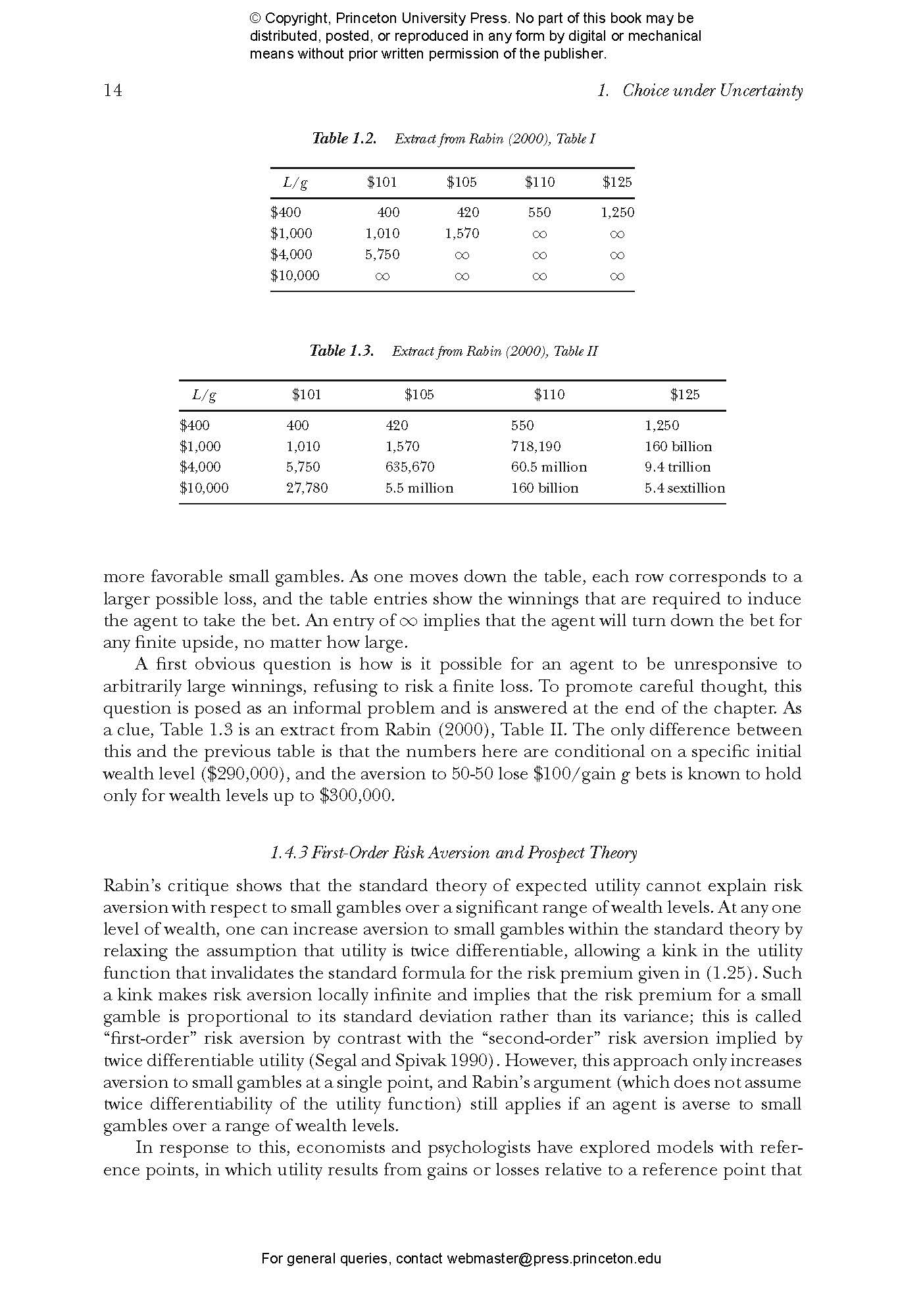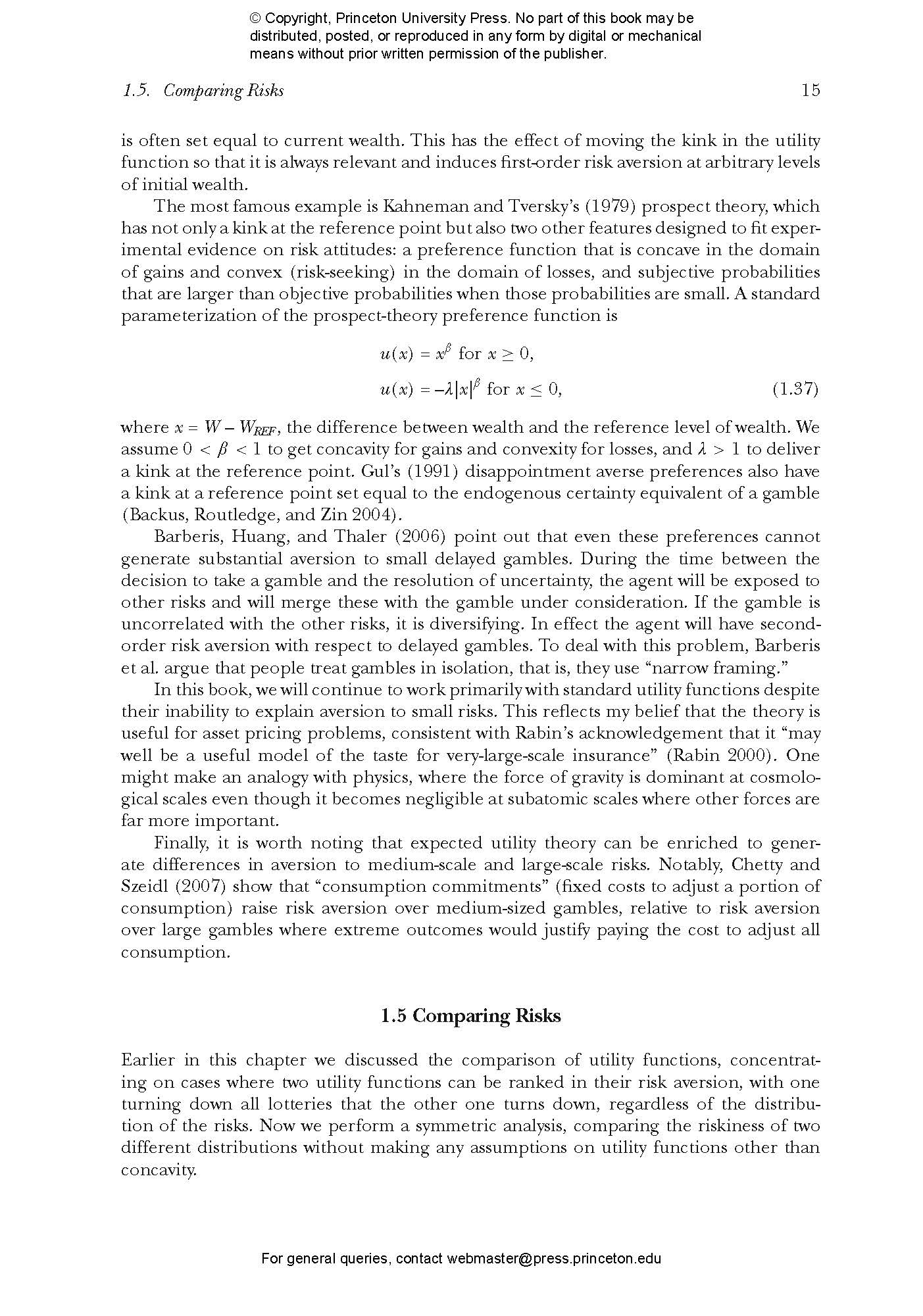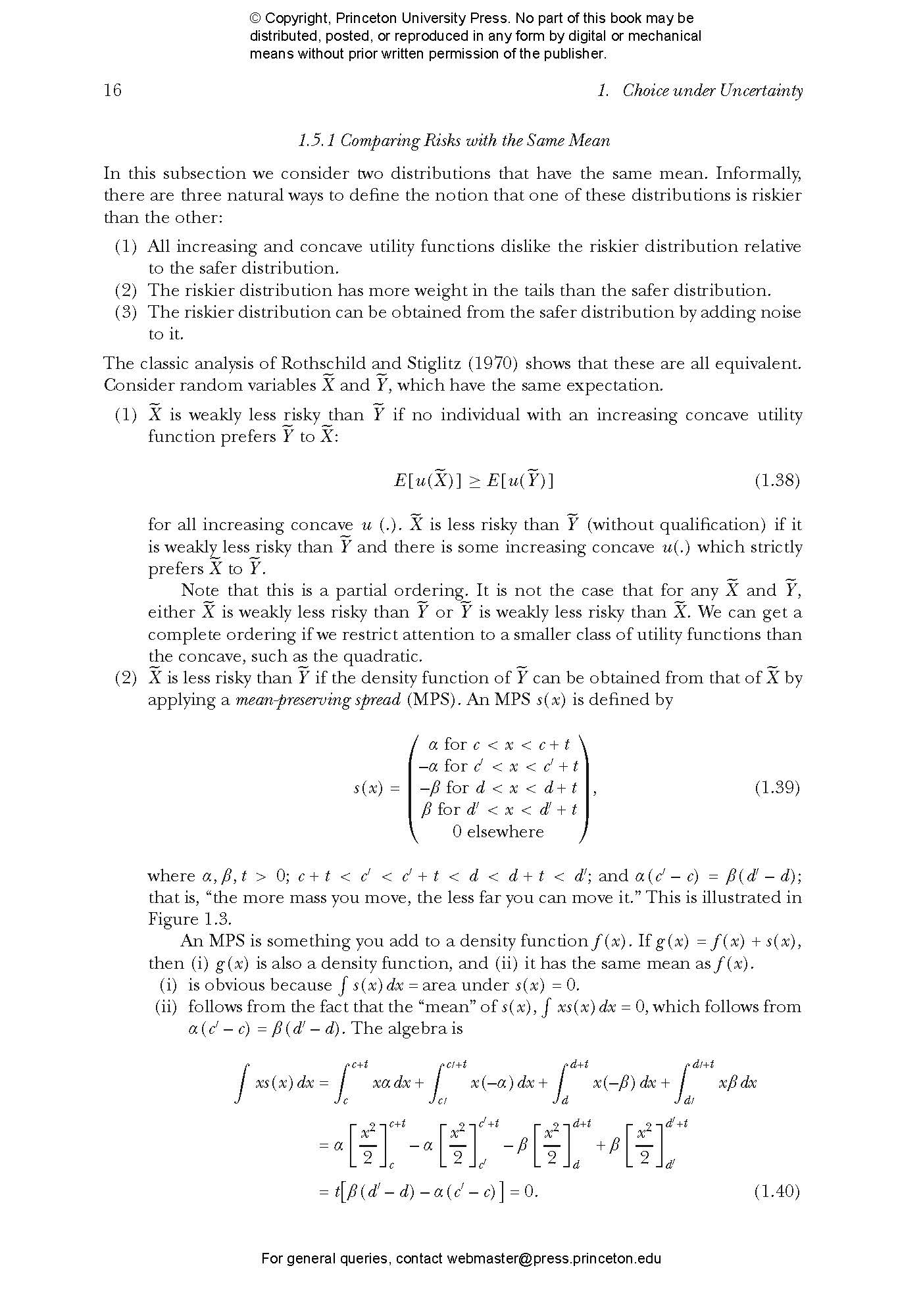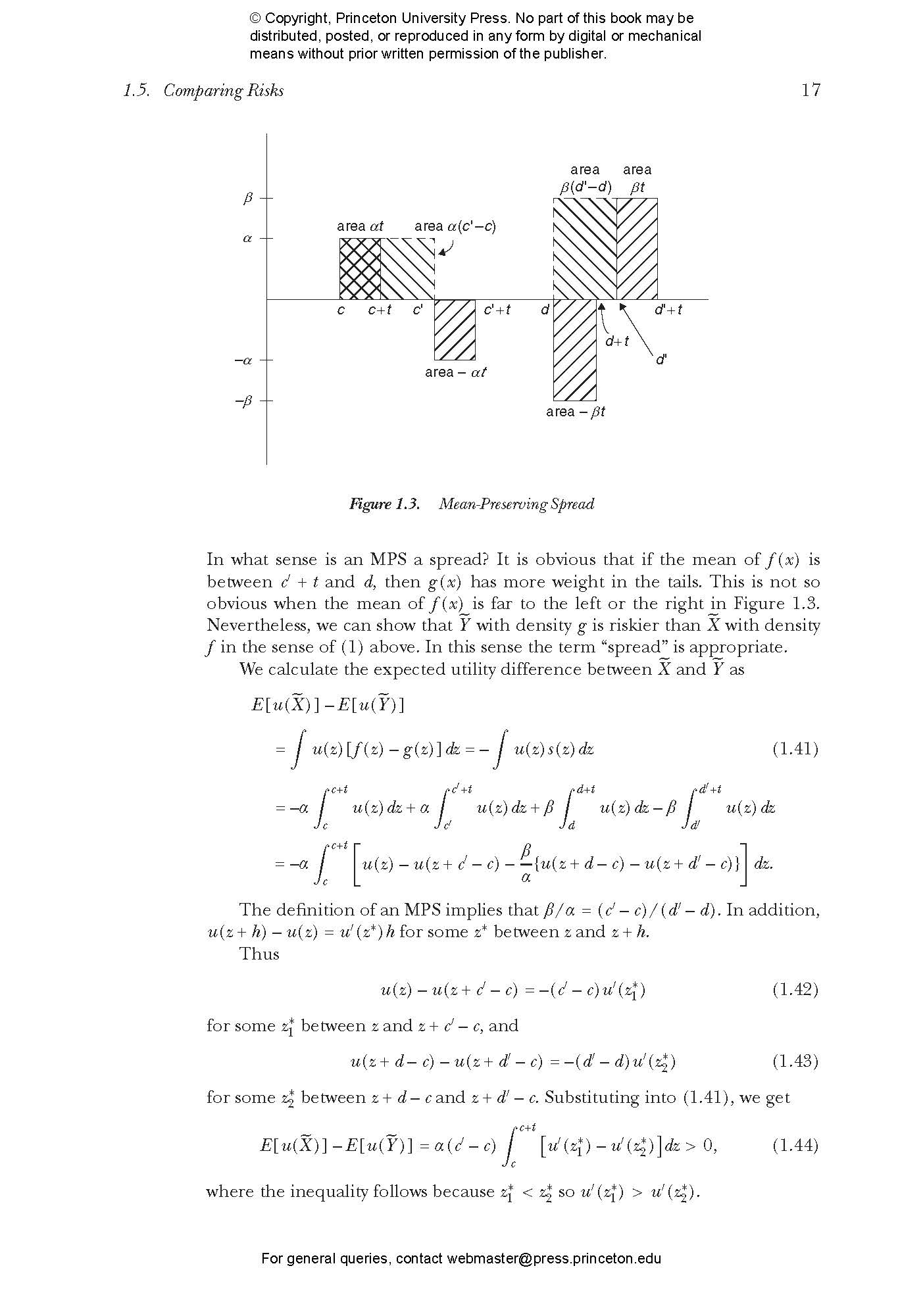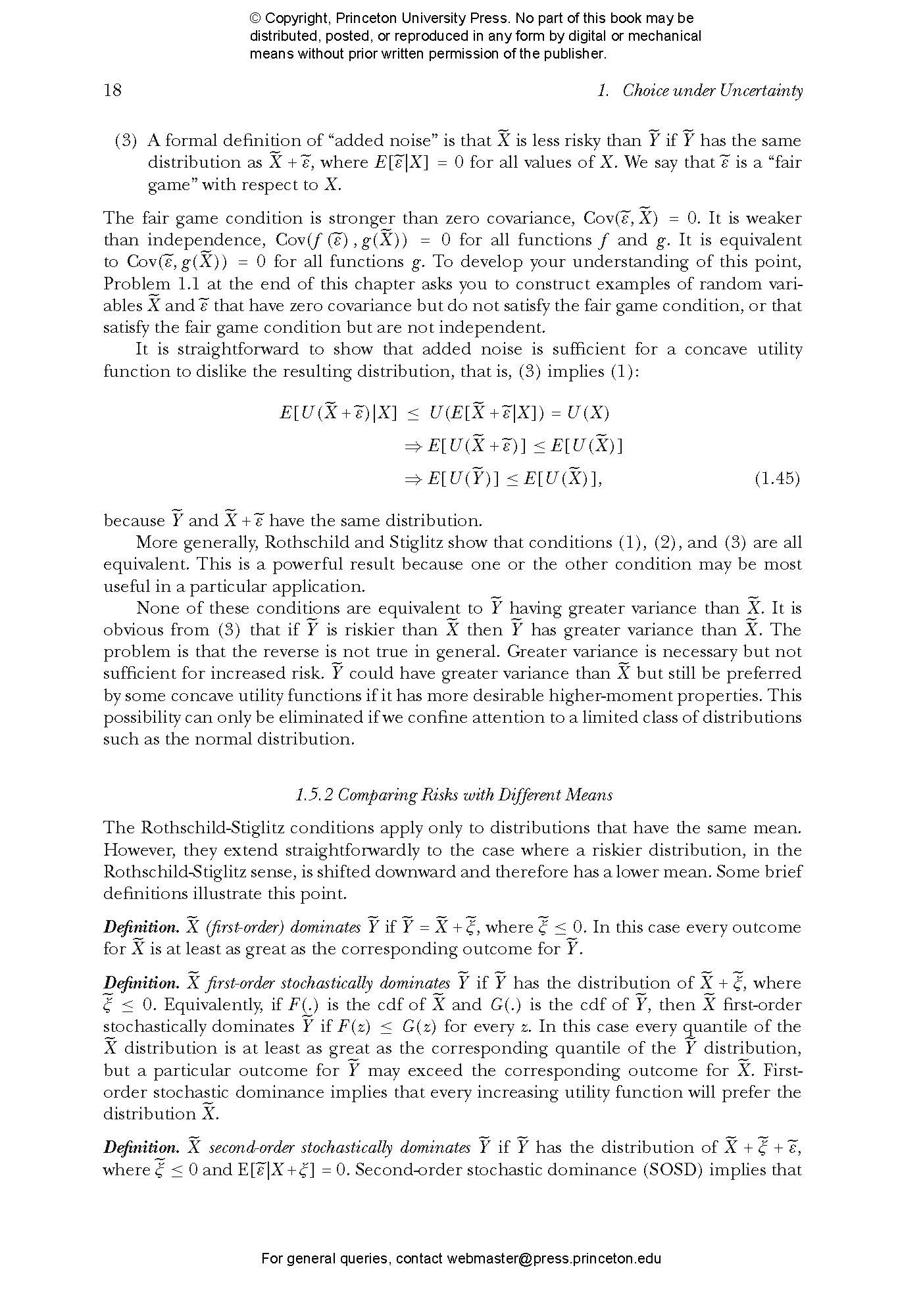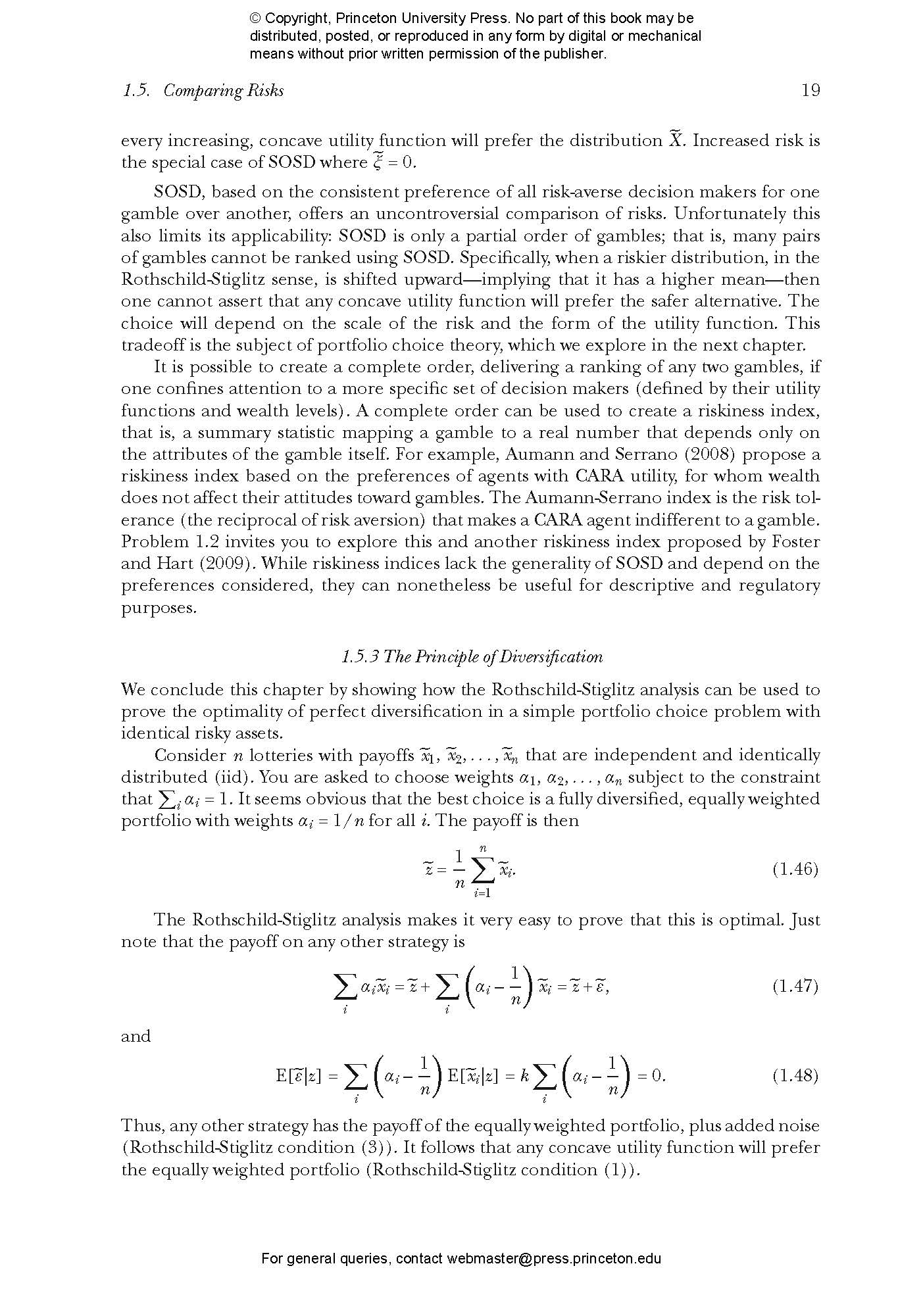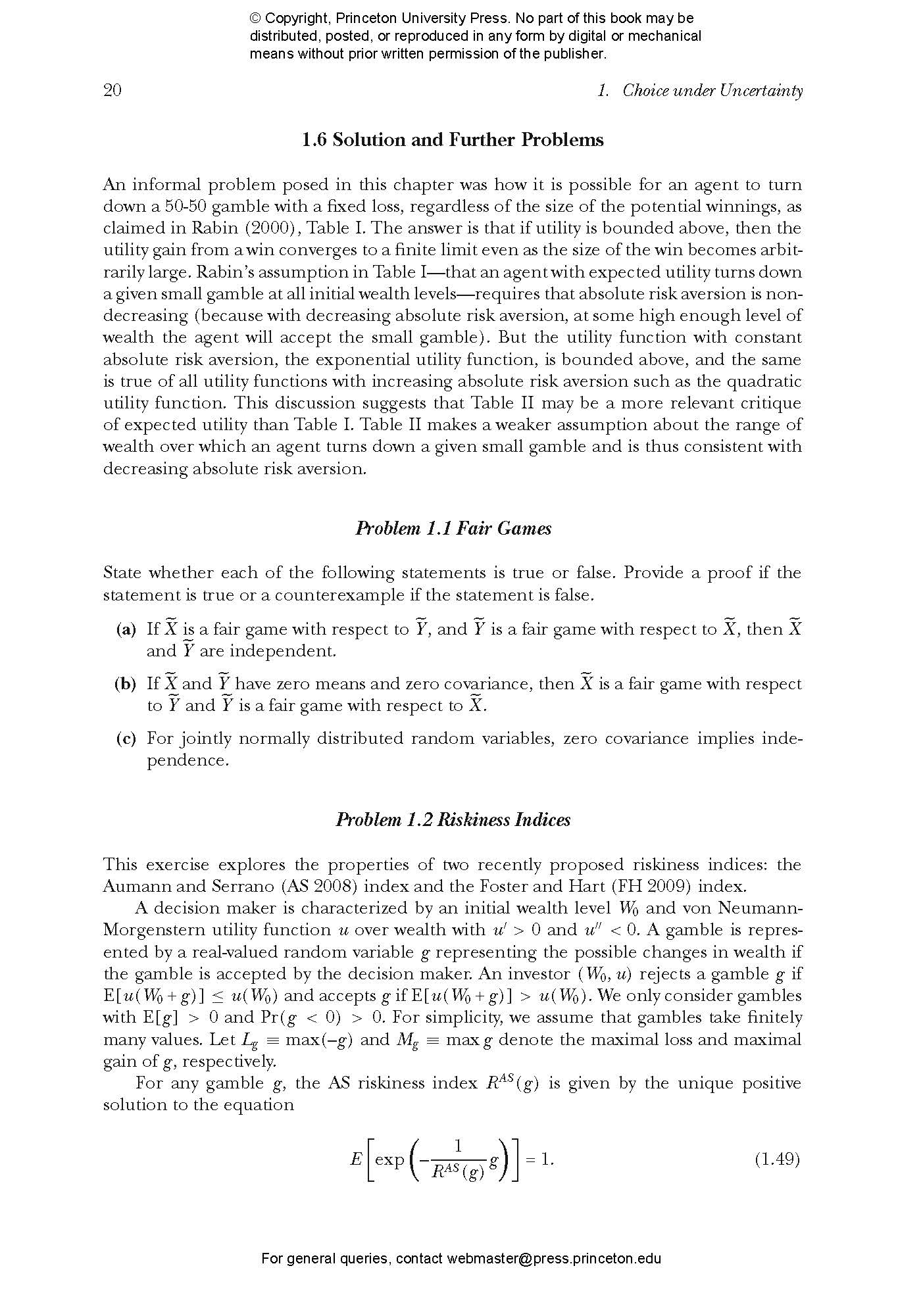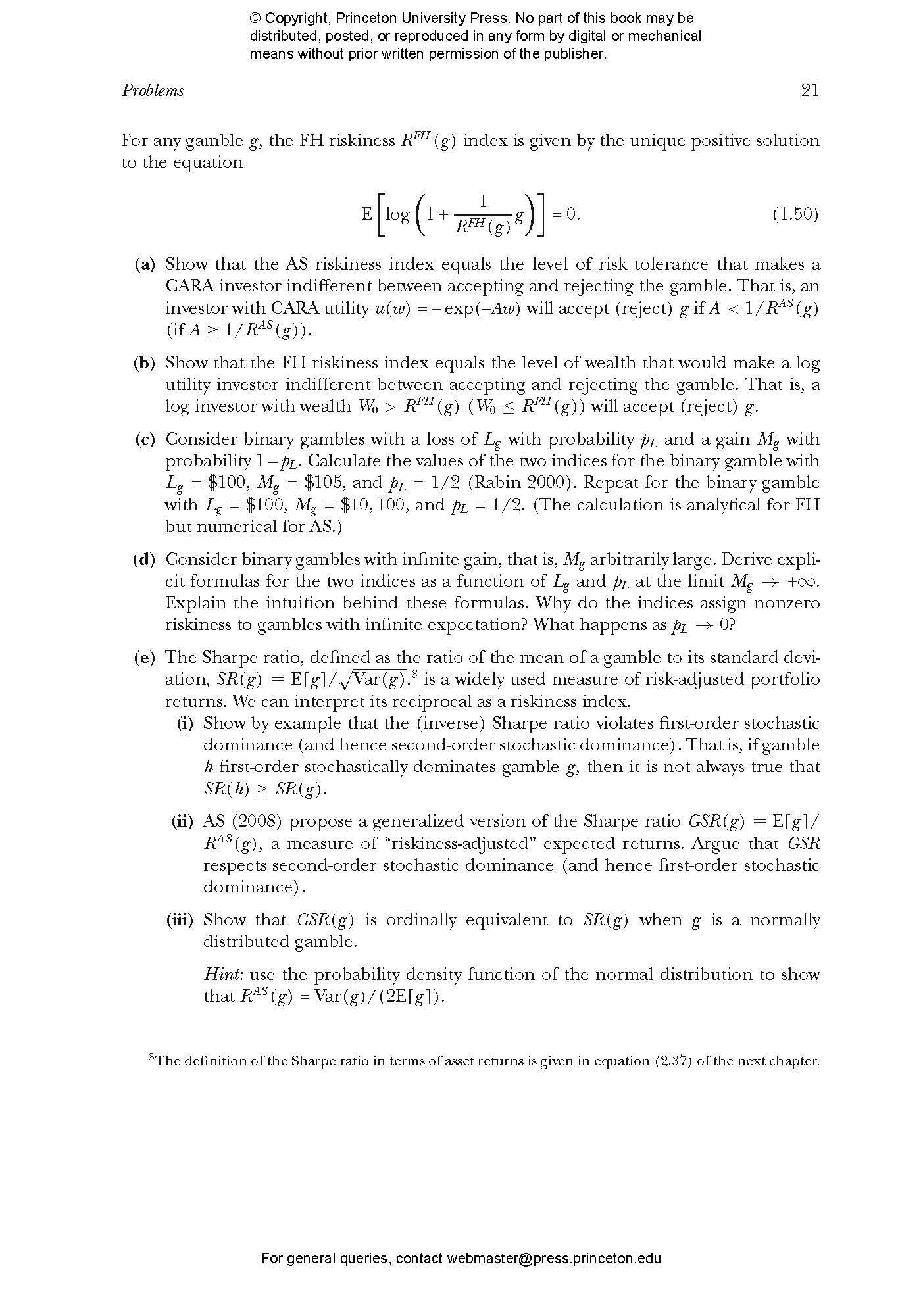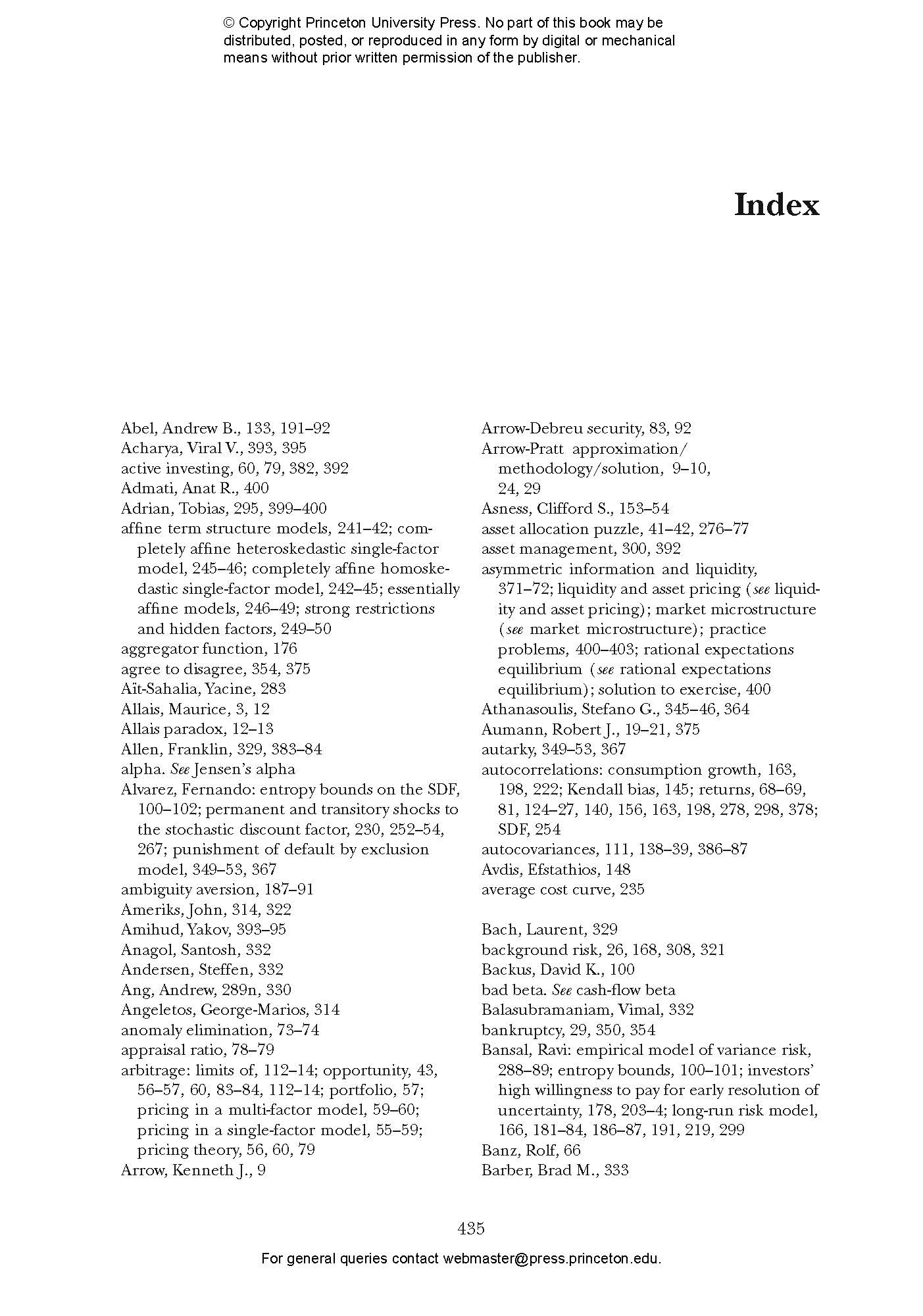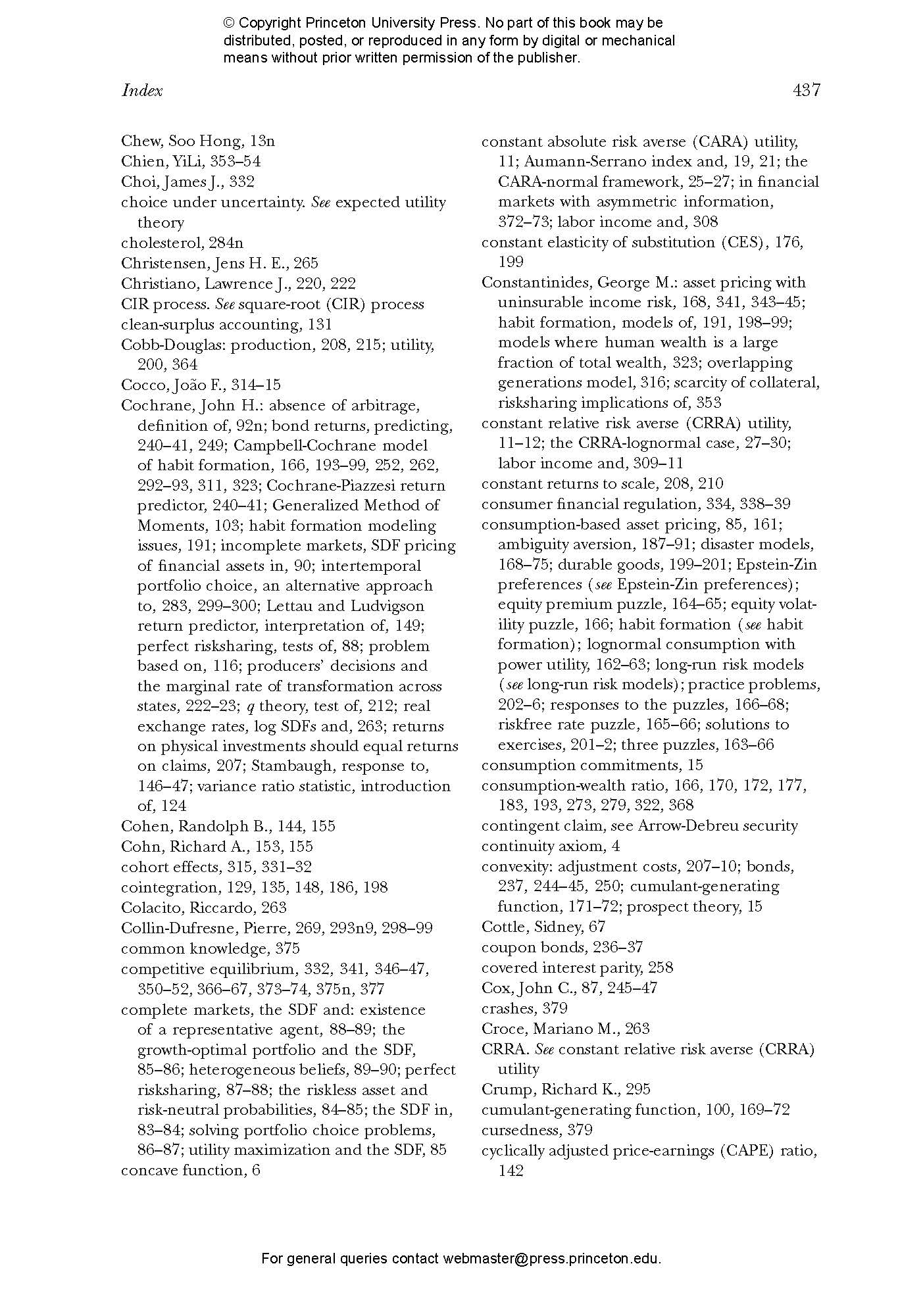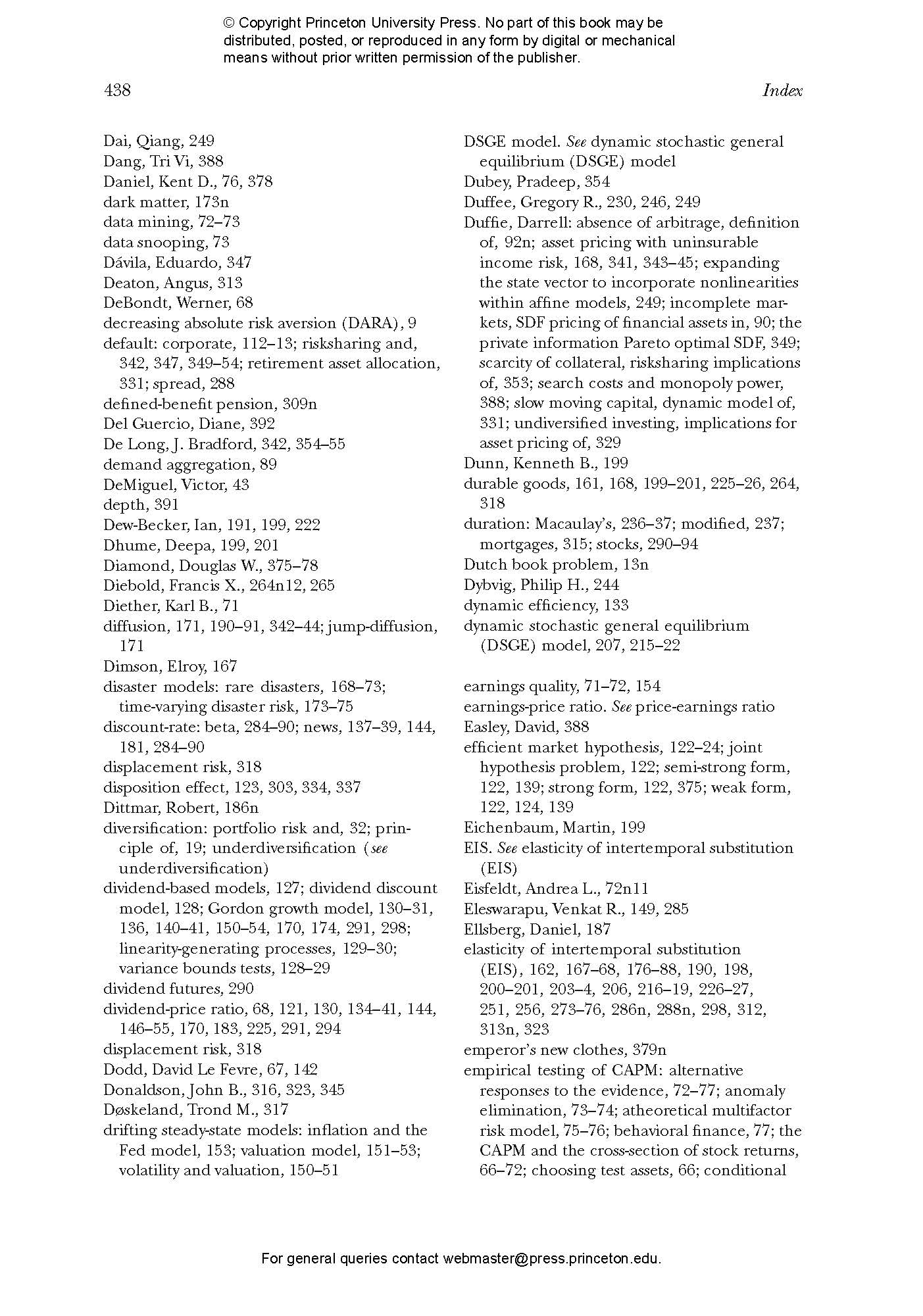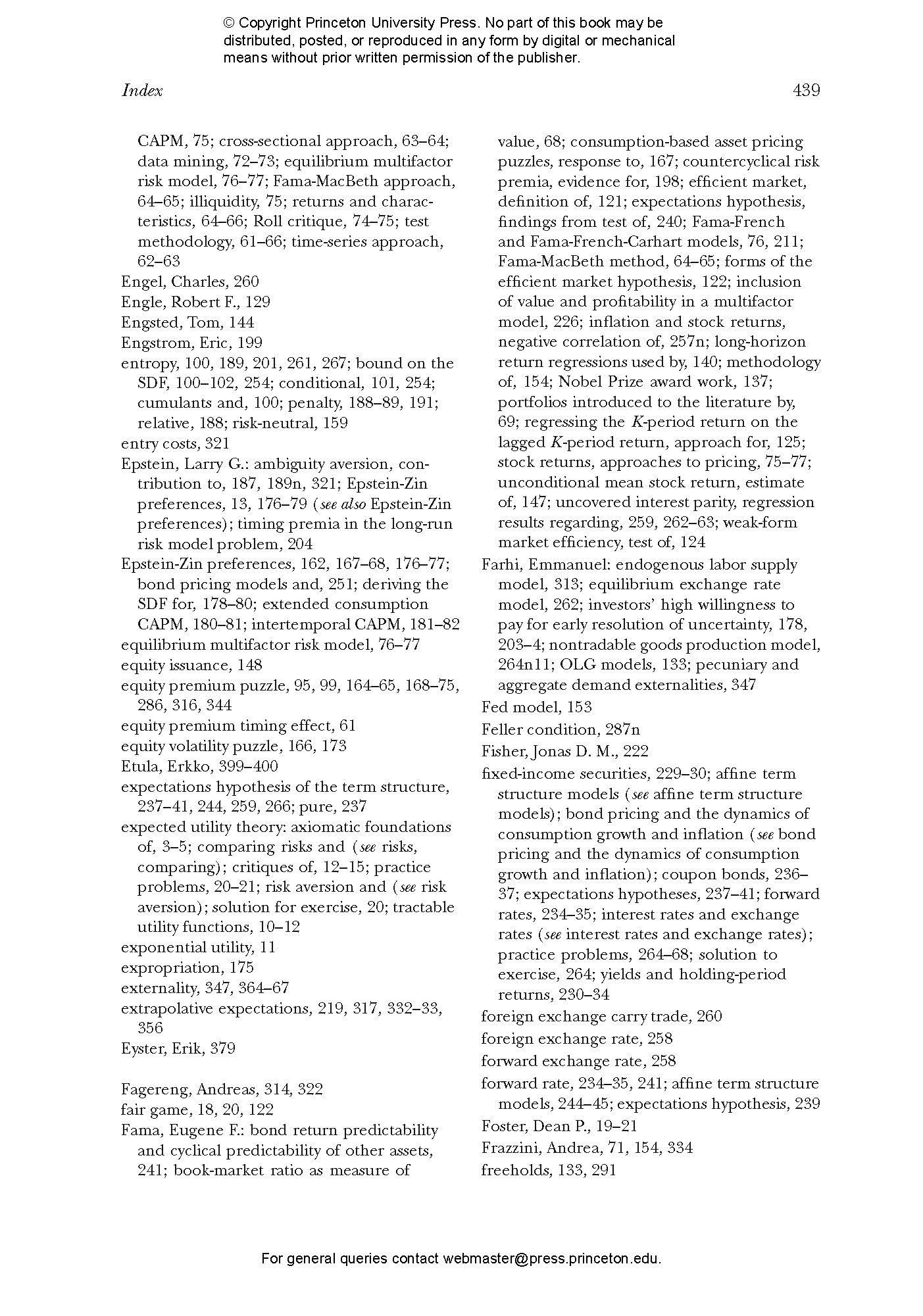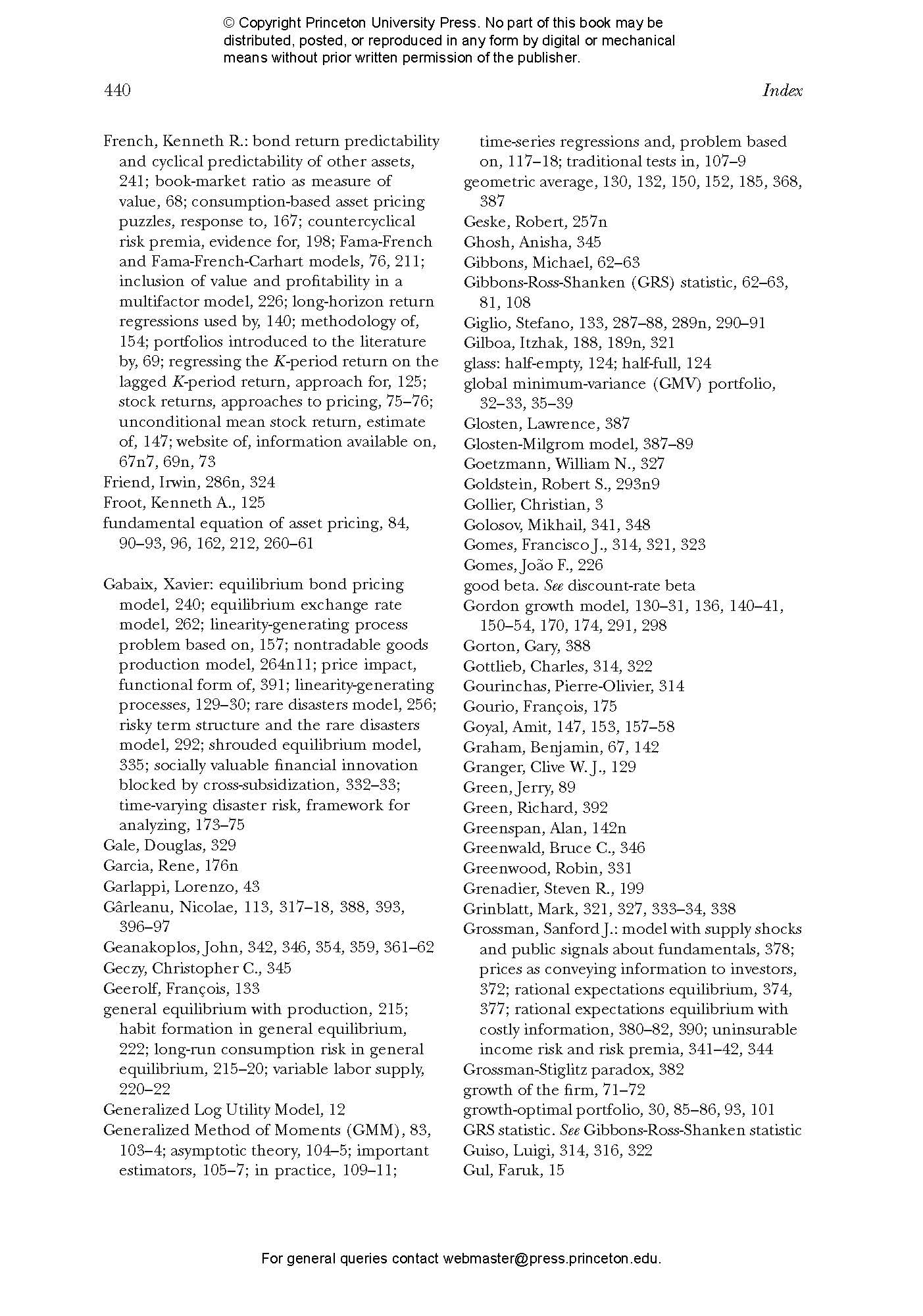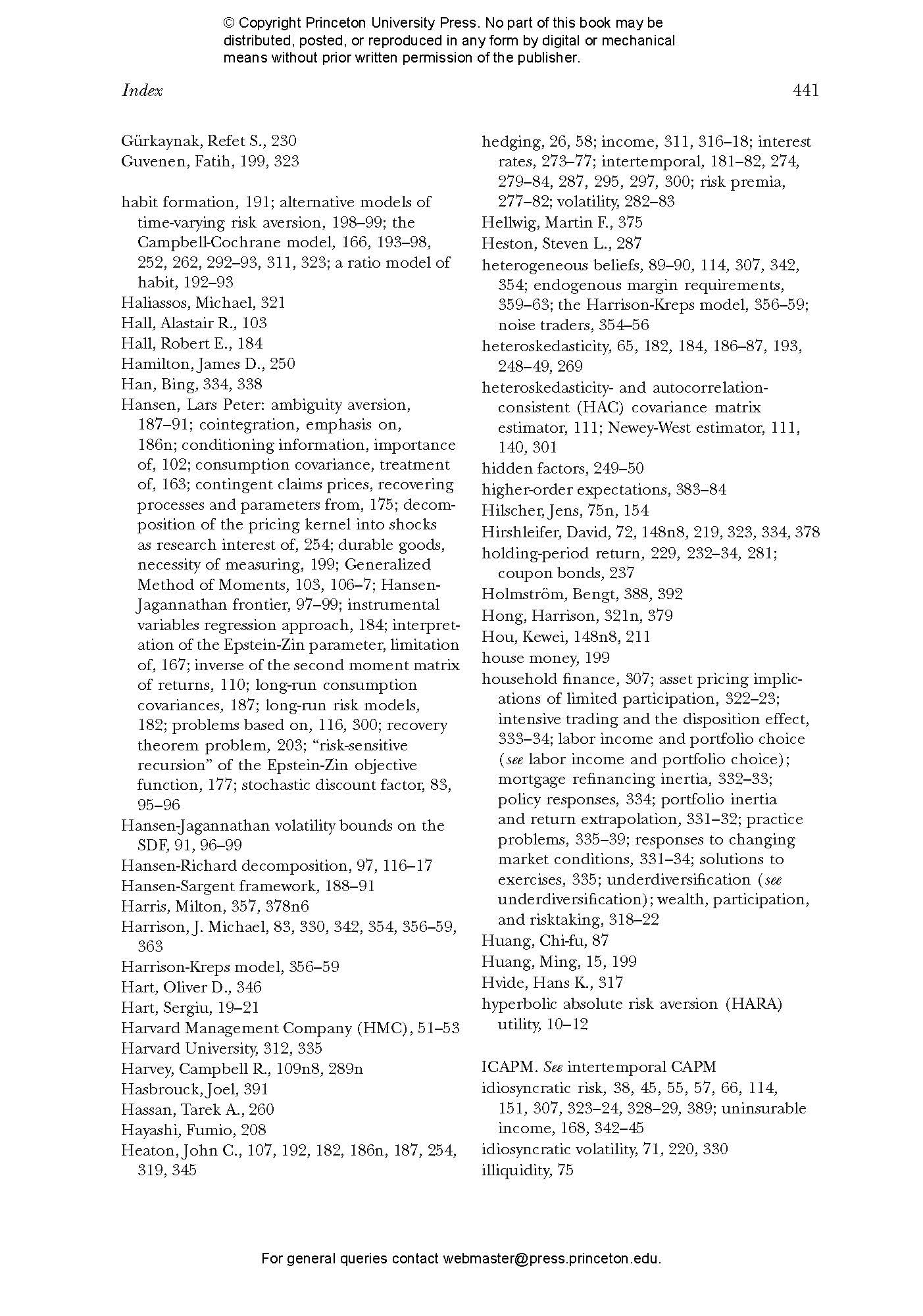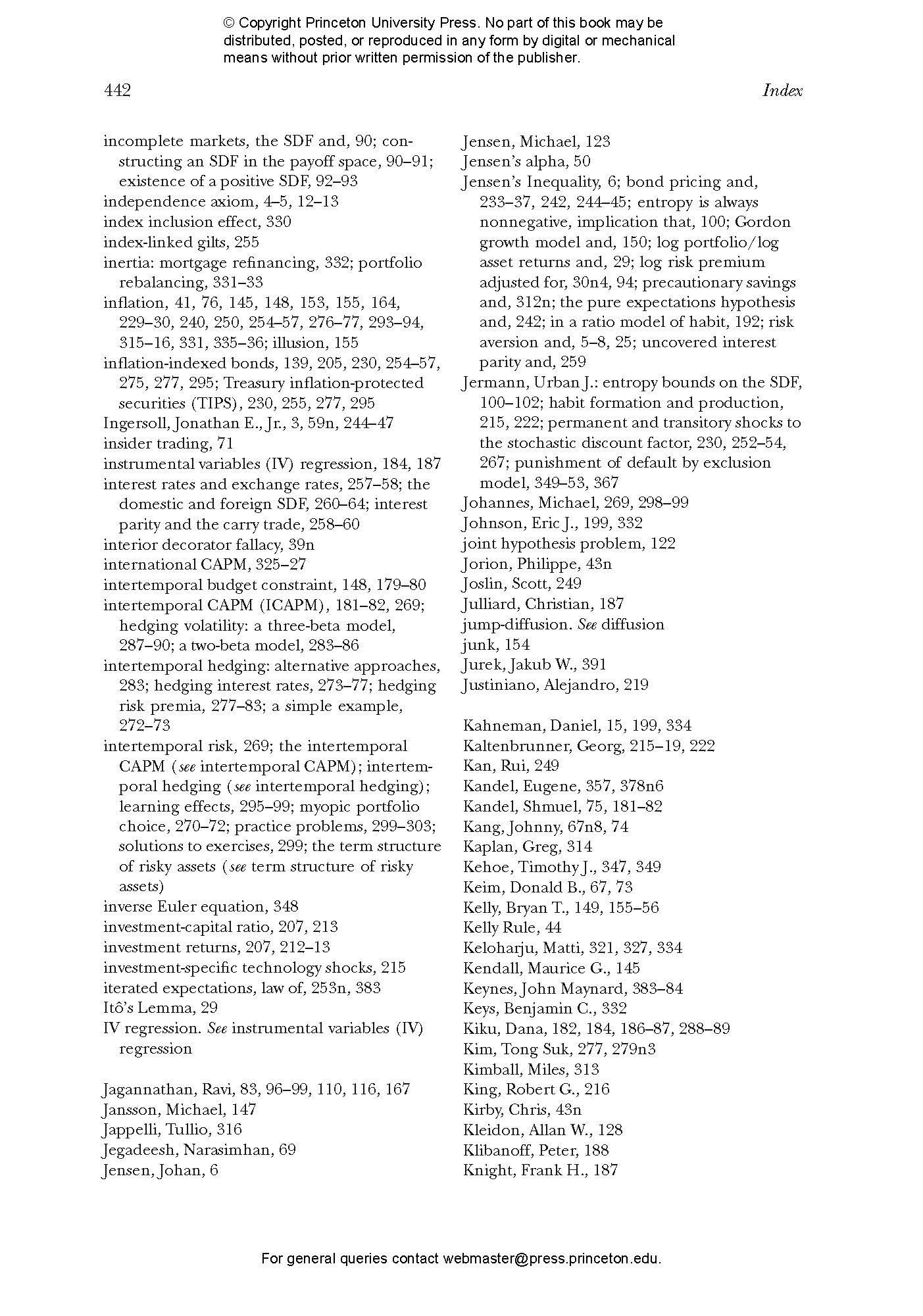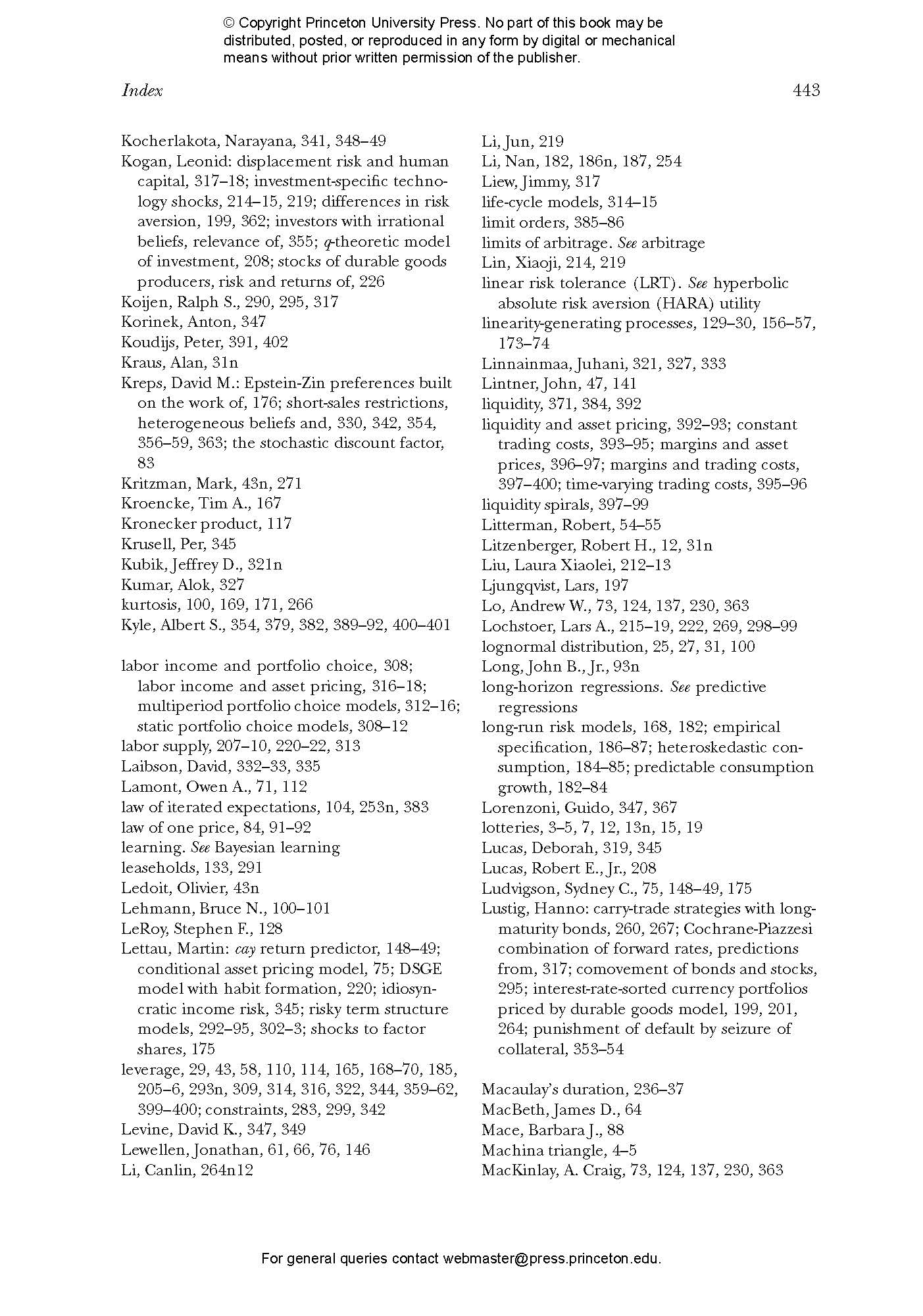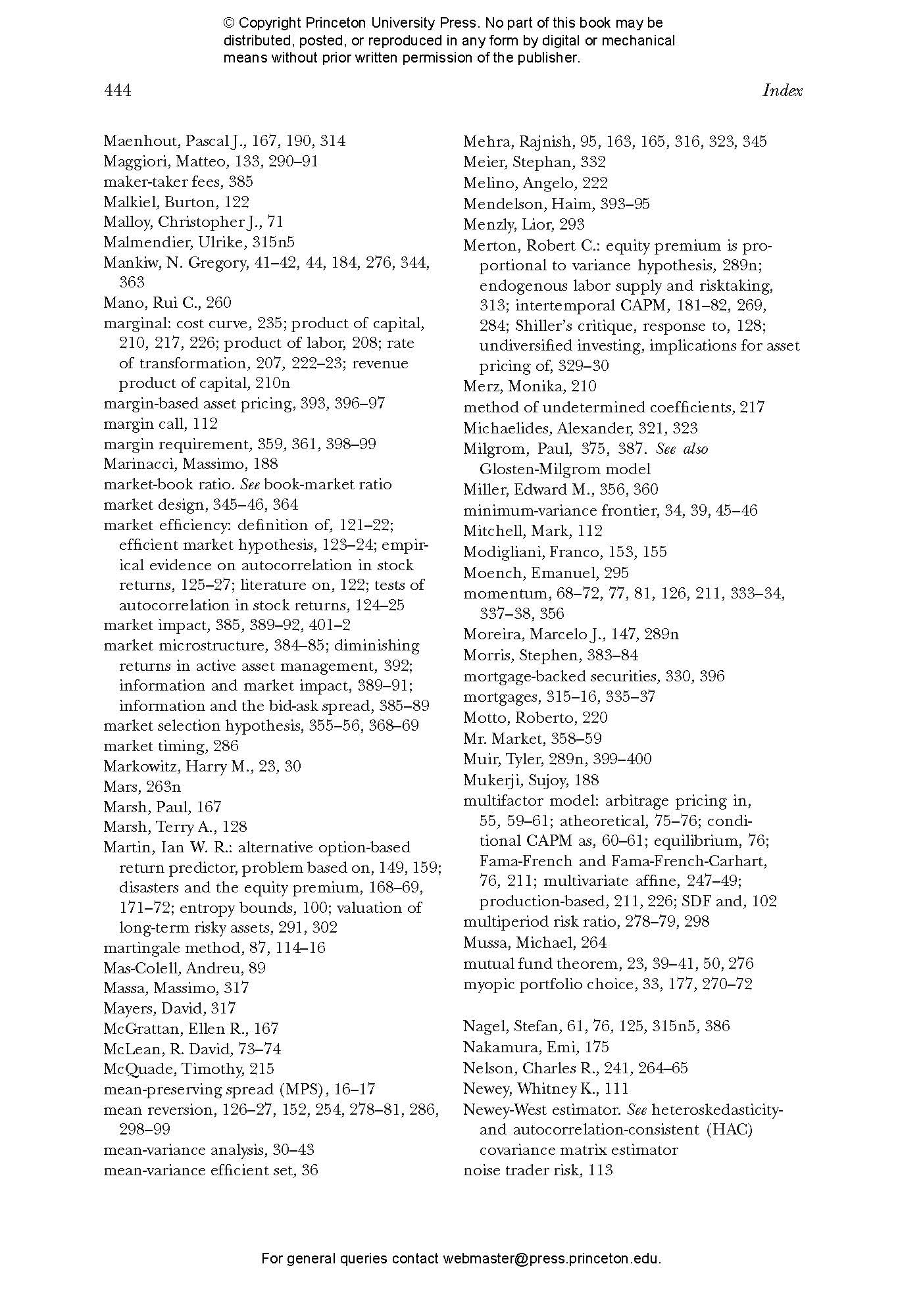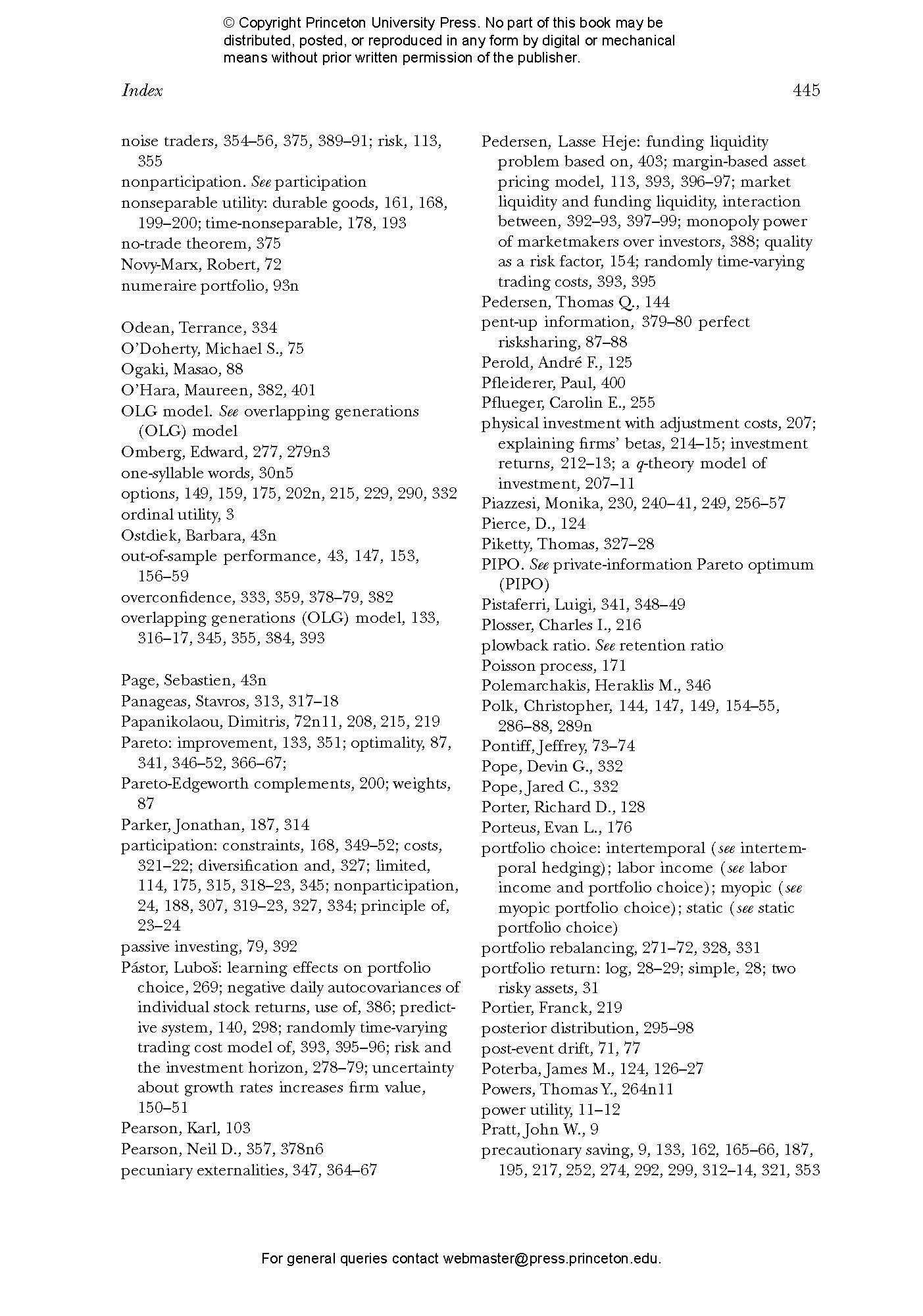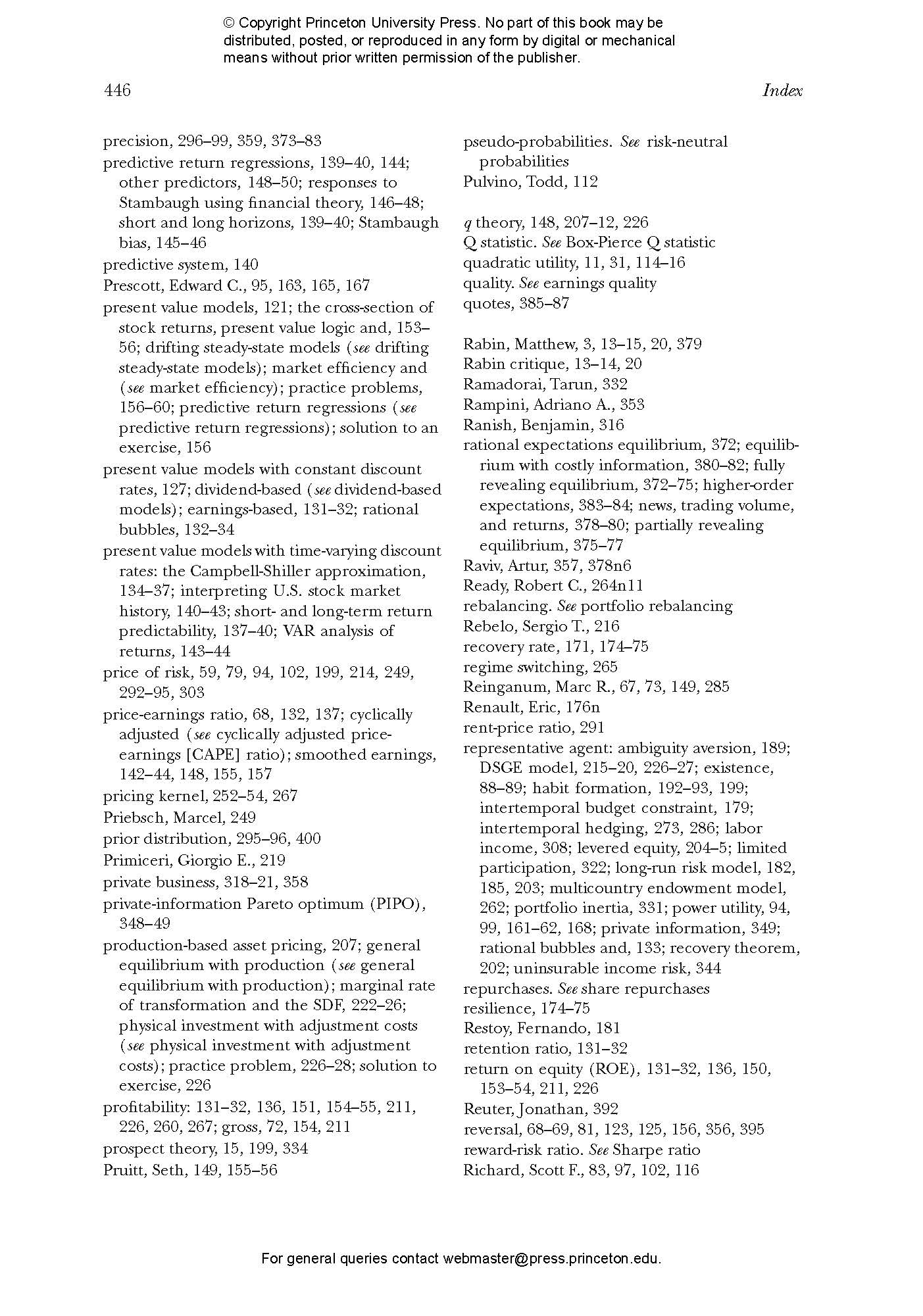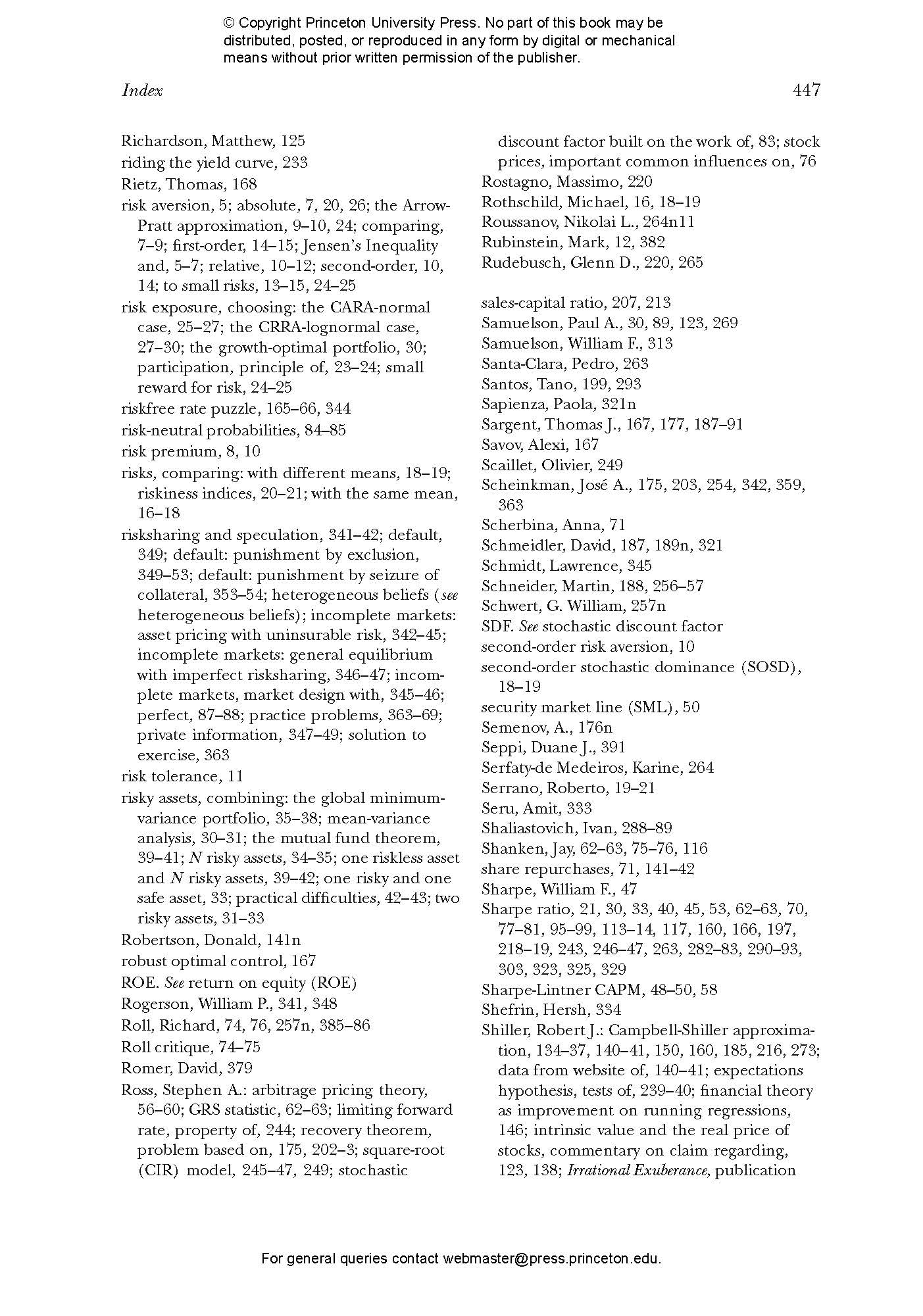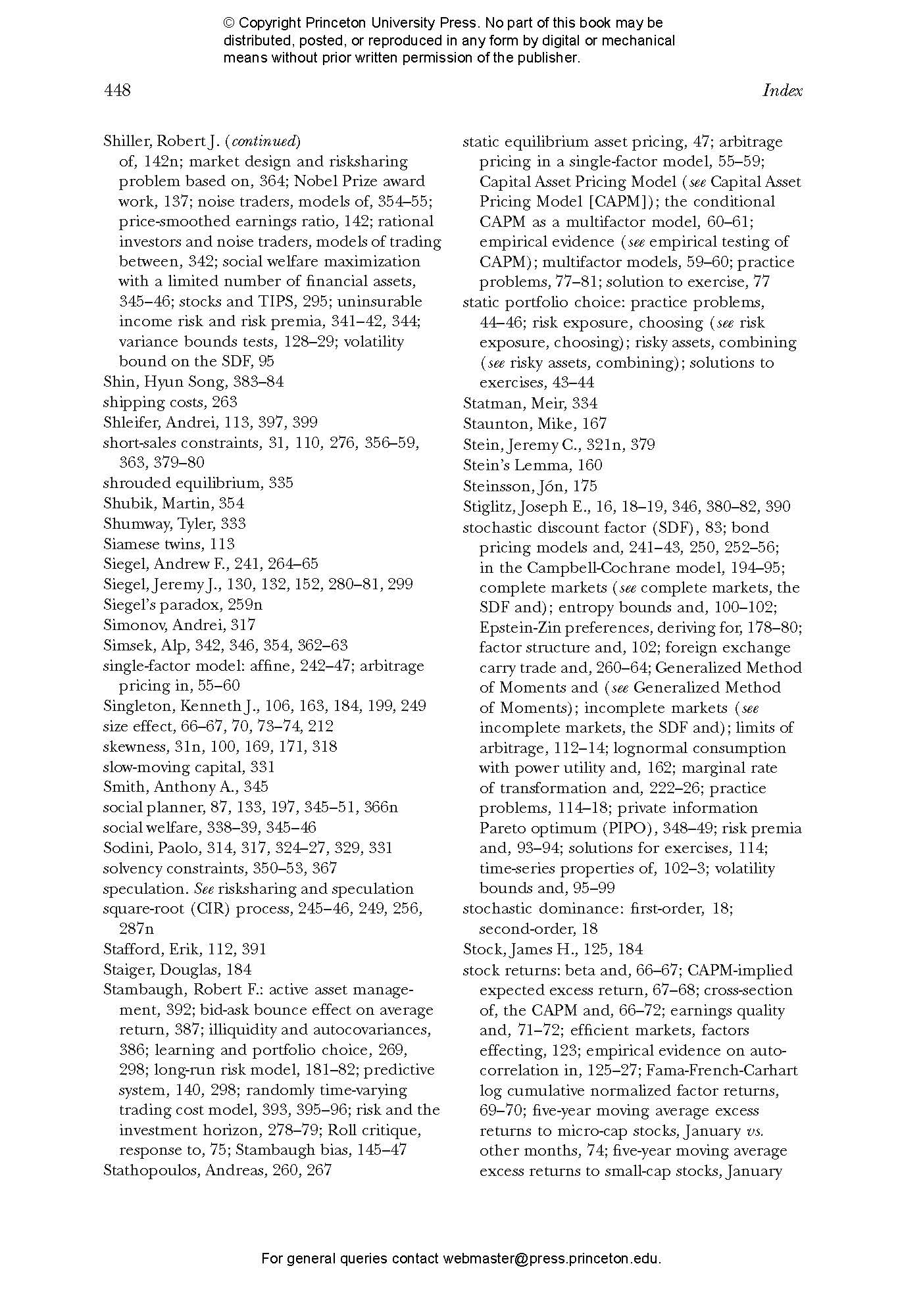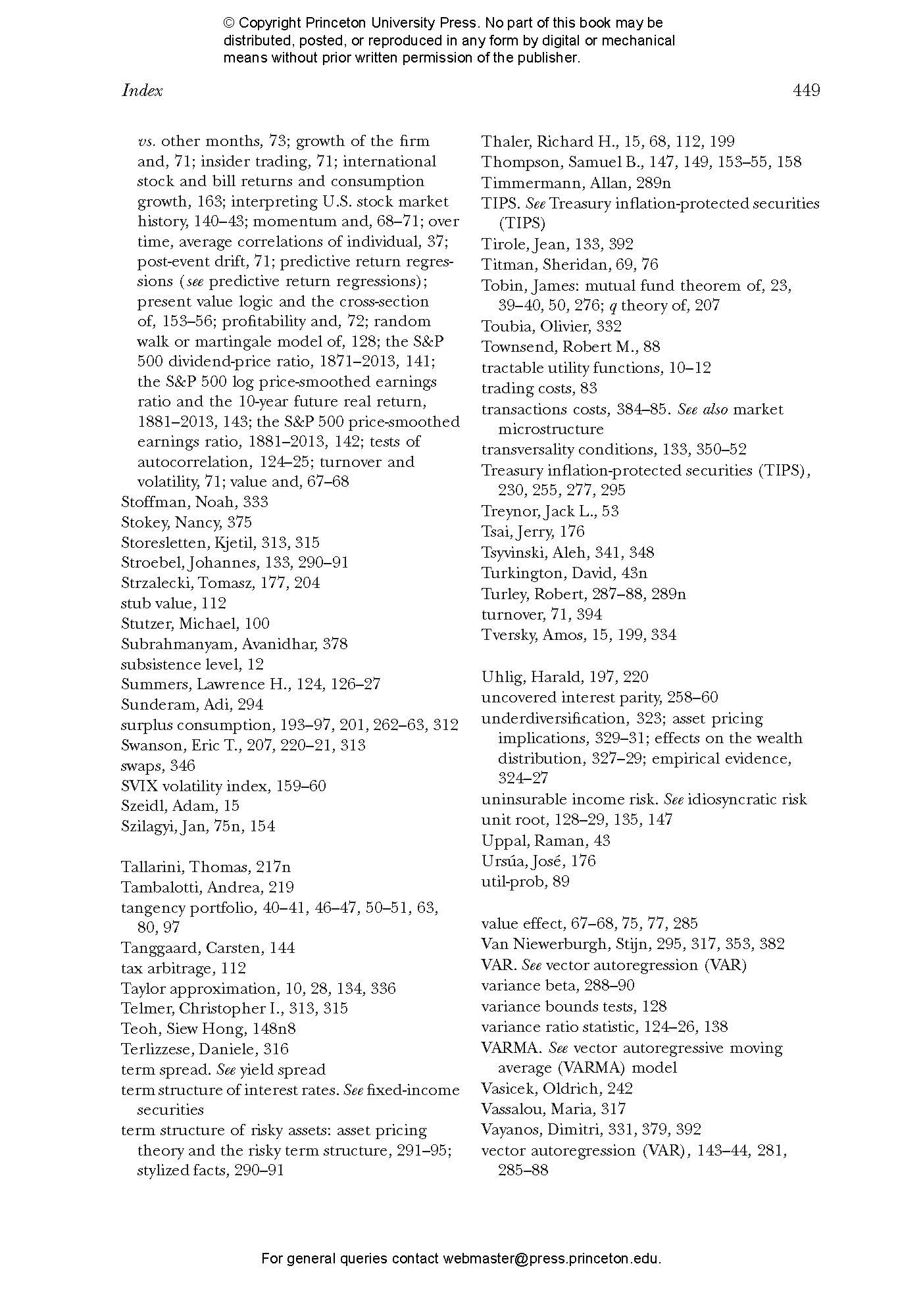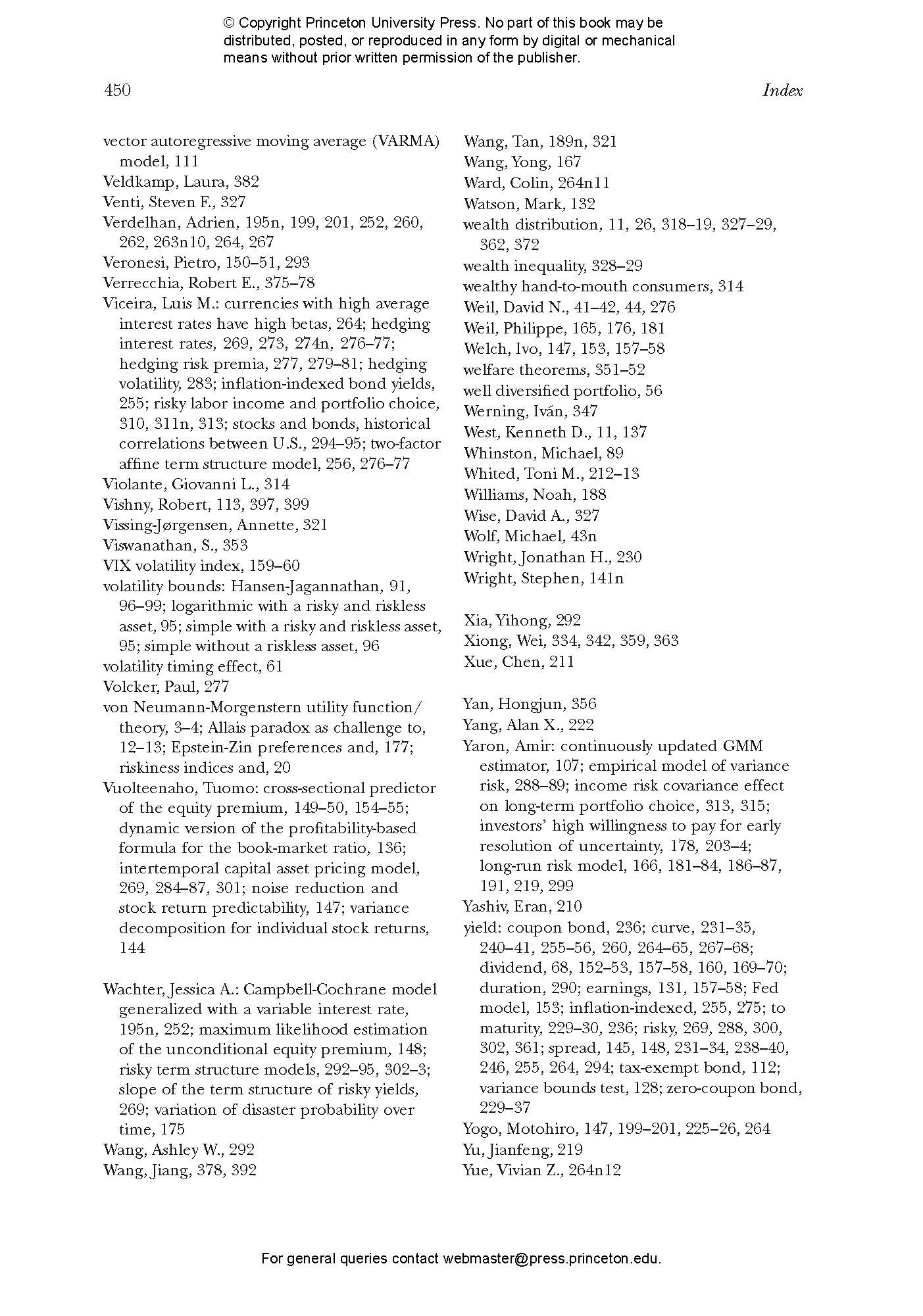Financial Decisions and Markets: A Course in Asset Pricing
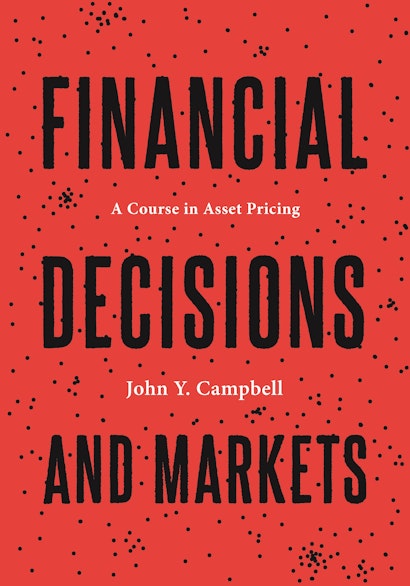

Hardcover
- Price:
- $95.00/£80.00
- ISBN:
- Published:
- Oct 31, 2017
- Copyright:
- 2018
- Pages:
- 480
- Size:
- 7 x 10 in.
- 46 line illus. 11 tables.
- Main_subject:
- Economics & Finance
ebook
In Financial Decisions and Markets, John Campbell, one of the field’s most respected authorities, provides a broad graduate-level overview of asset pricing. He introduces students to leading theories of portfolio choice, their implications for asset prices, and empirical patterns of risk and return in financial markets. Campbell emphasizes the interplay of theory and evidence, as theorists respond to empirical puzzles by developing models with new testable implications. The book shows how models make predictions not only about asset prices but also about investors’ financial positions, and how they often draw on insights from behavioral economics.
After a careful introduction to single-period models, Campbell develops multiperiod models with time-varying discount rates, reviews the leading approaches to consumption-based asset pricing, and integrates the study of equities and fixed-income securities. He discusses models with heterogeneous agents who use financial markets to share their risks, but also may speculate against one another on the basis of different beliefs or private information. Campbell takes a broad view of the field, linking asset pricing to related areas, including financial econometrics, household finance, and macroeconomics. The textbook works in discrete time throughout, and does not require stochastic calculus. Problems are provided at the end of each chapter to challenge students to develop their understanding of the main issues in financial economics.
The most comprehensive and balanced textbook on asset pricing available, Financial Decisions and Markets is an essential resource for all graduate students and practitioners in finance and related fields.
- Integrated treatment of asset pricing theory and empirical evidence
- Emphasis on investors’ decisions
- Broad view linking the field to financial econometrics, household finance, and macroeconomics
- Topics treated in discrete time, with no requirement for stochastic calculus
- Solutions manual for problems available to professors
